
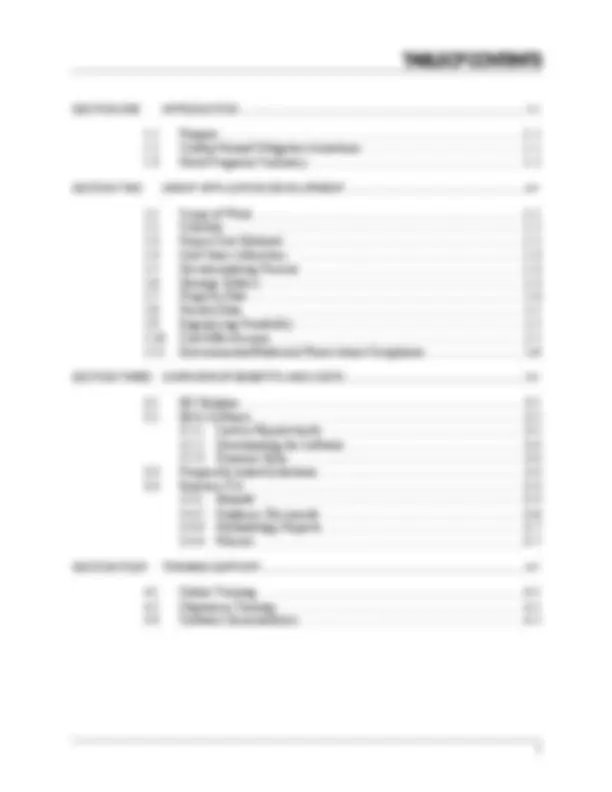

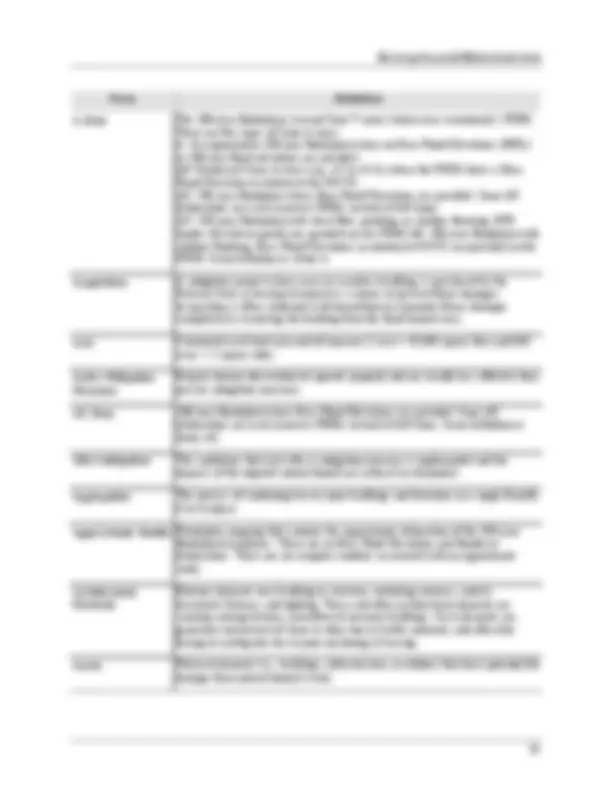
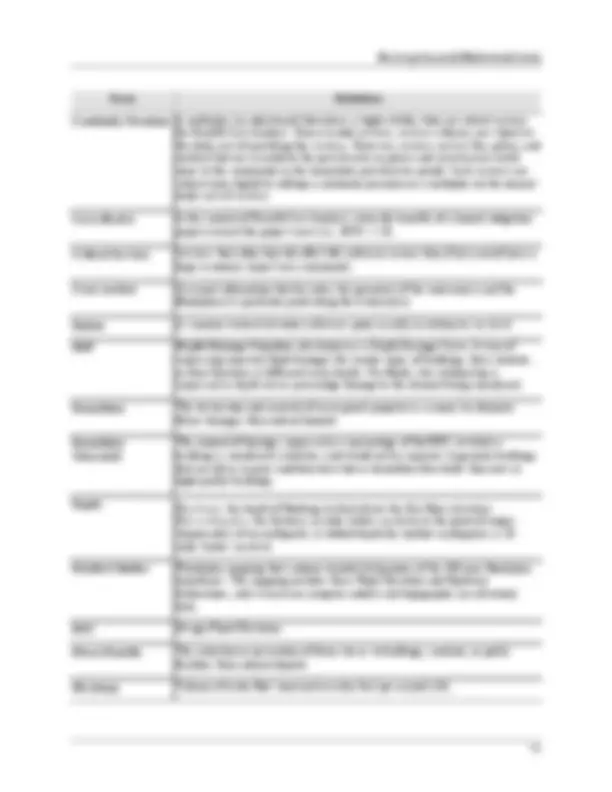
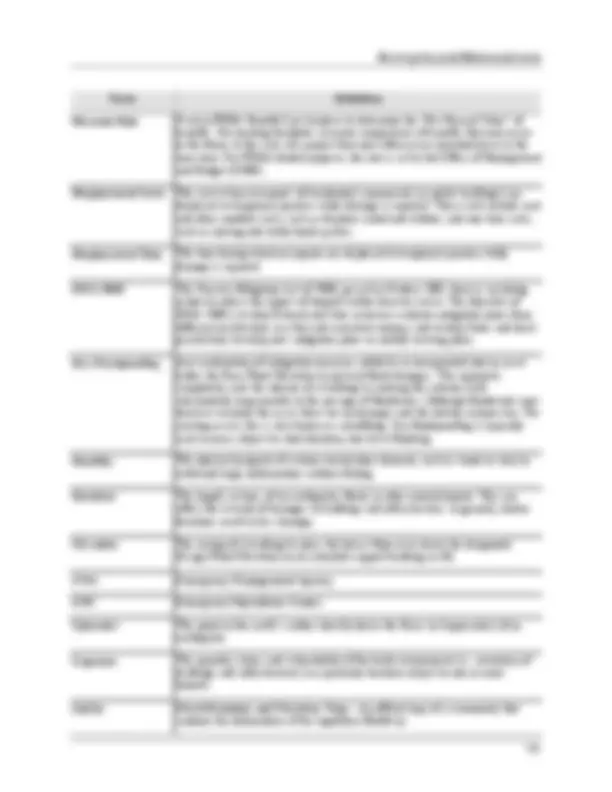
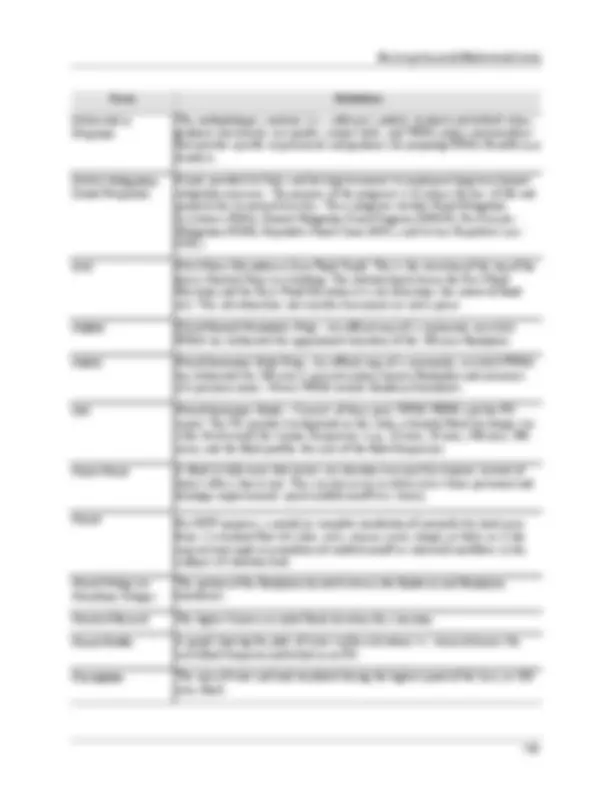
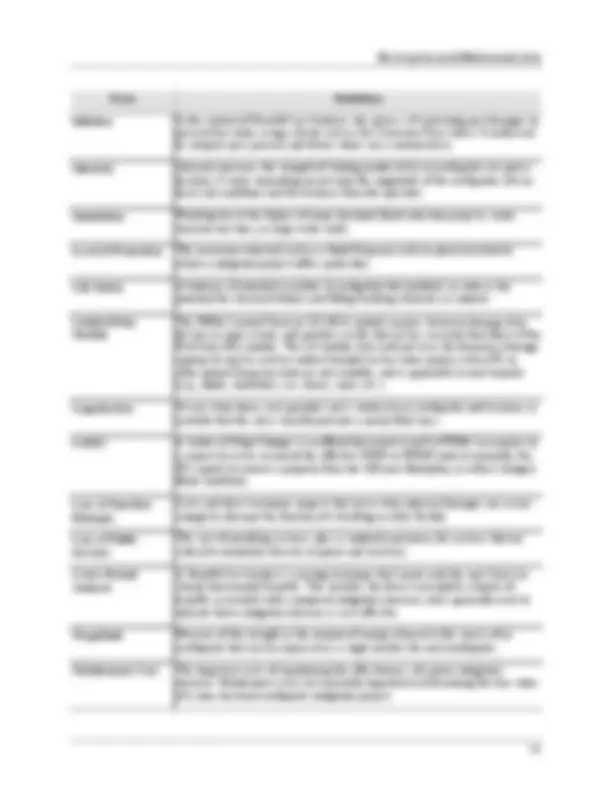
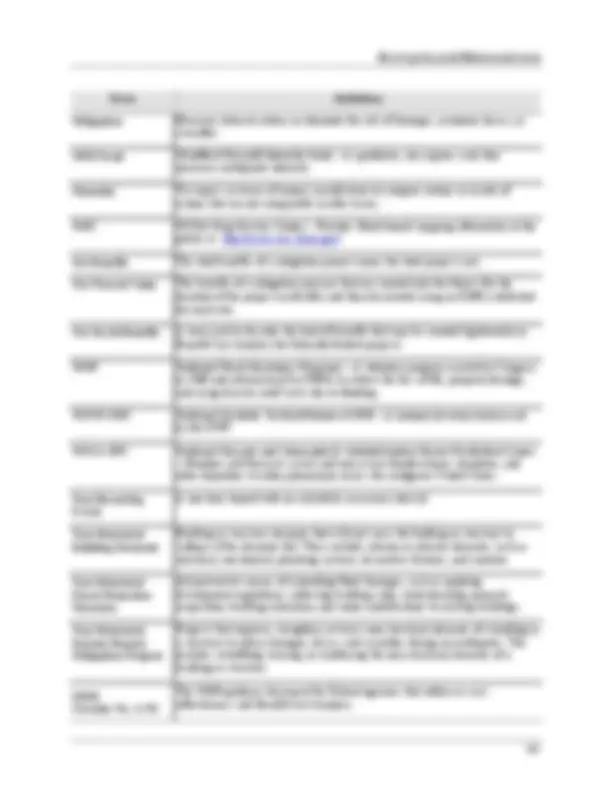
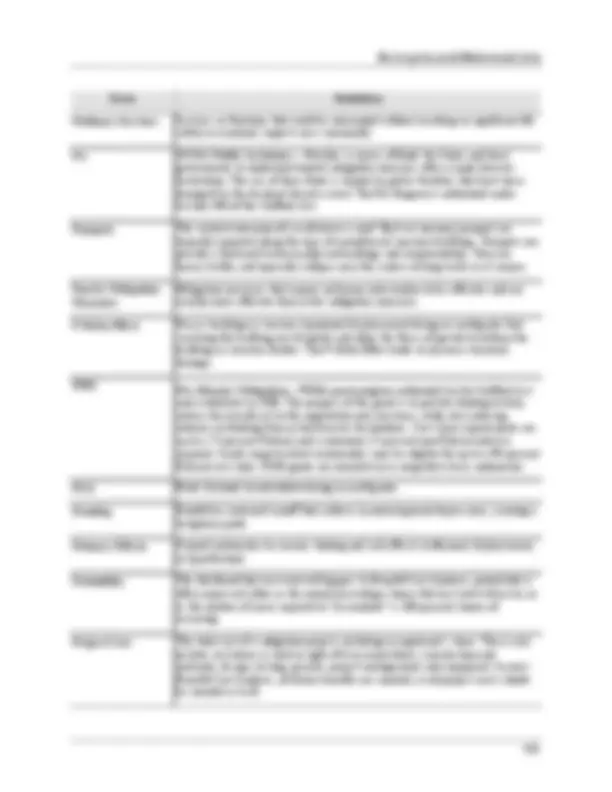
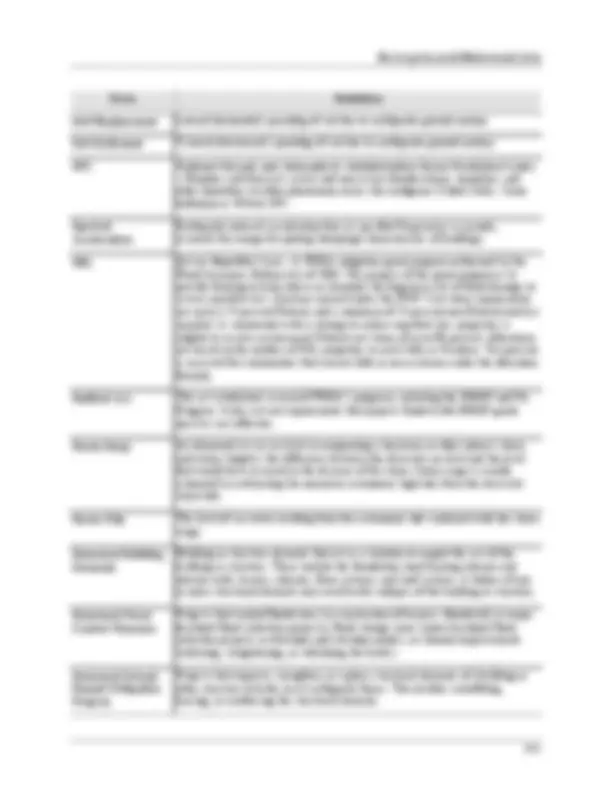
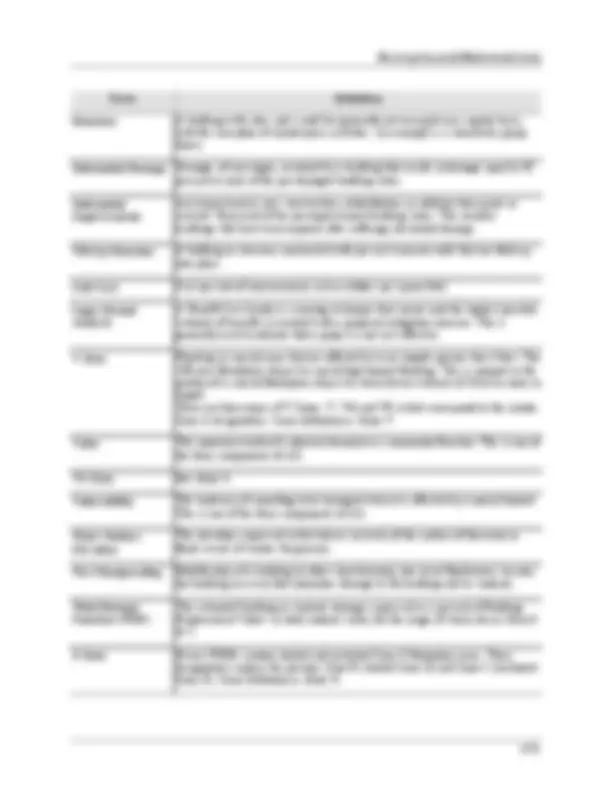

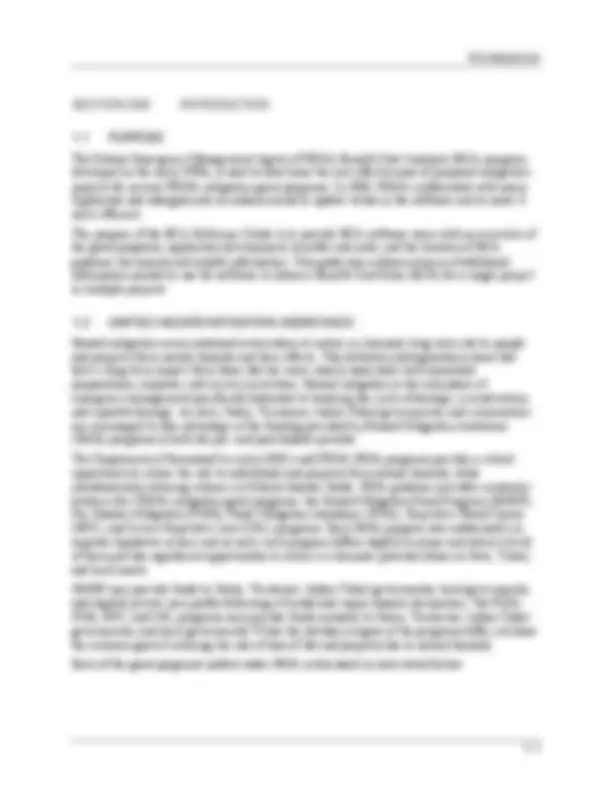
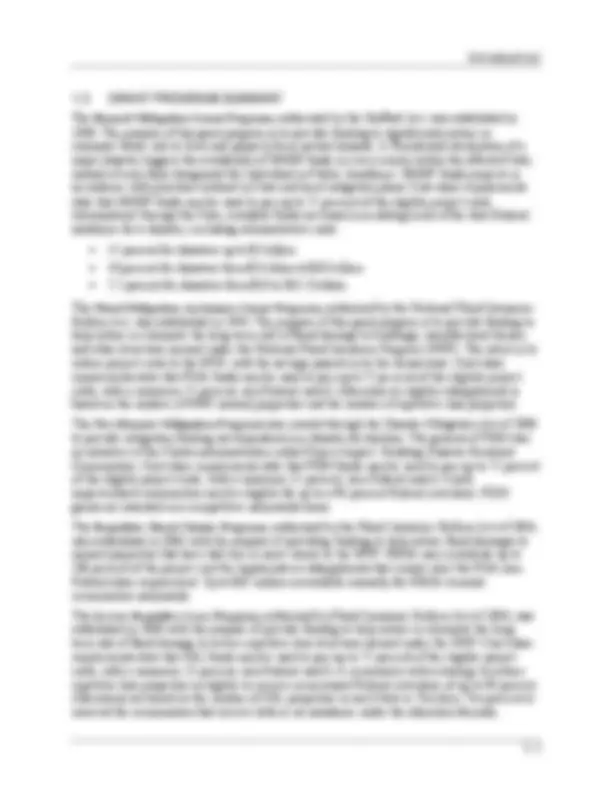

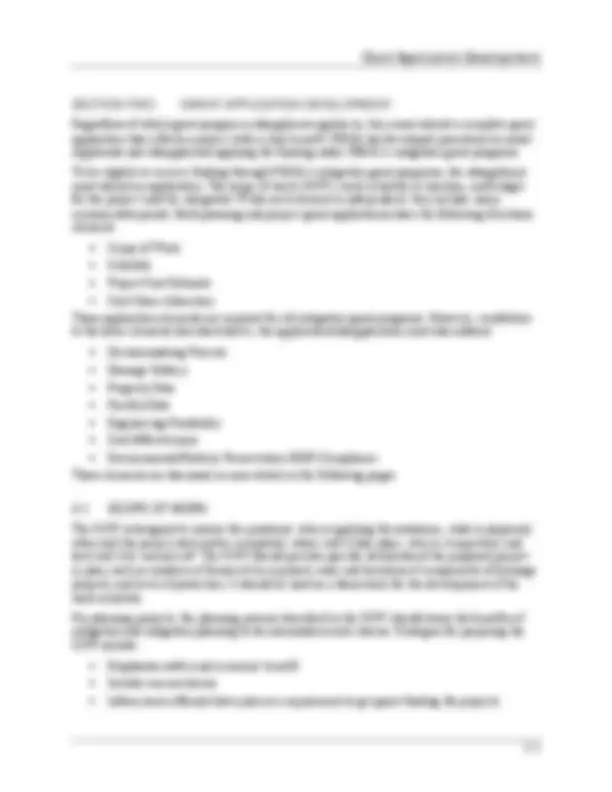
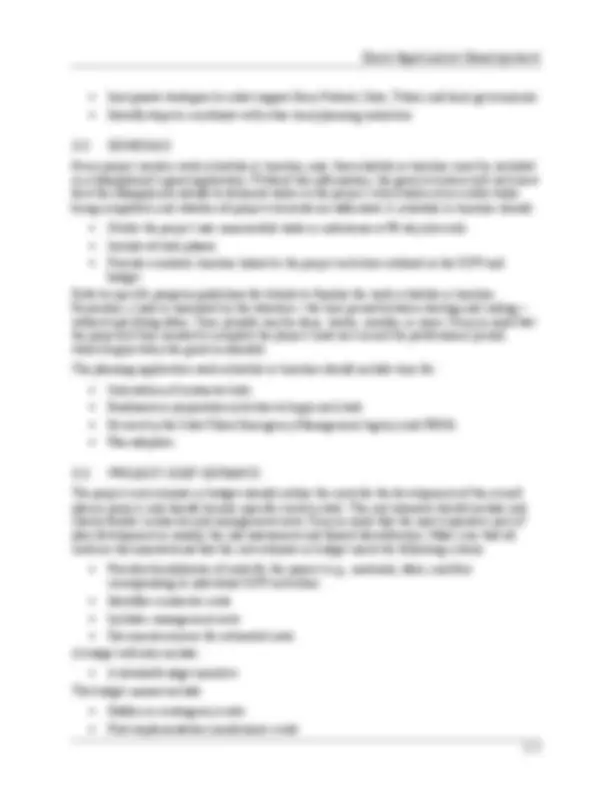
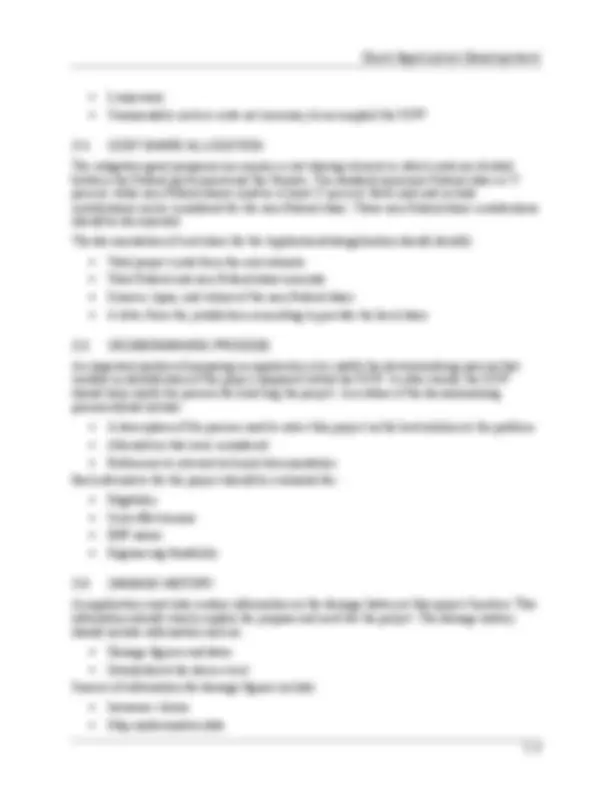
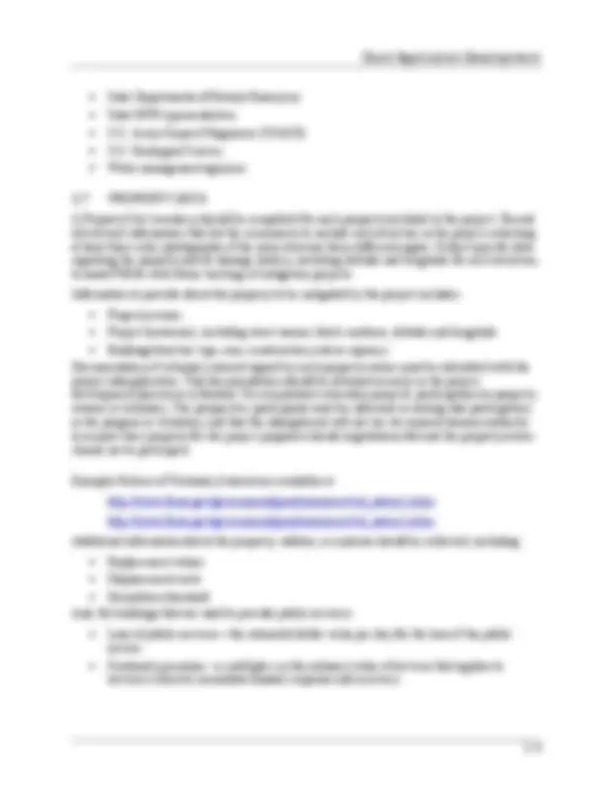
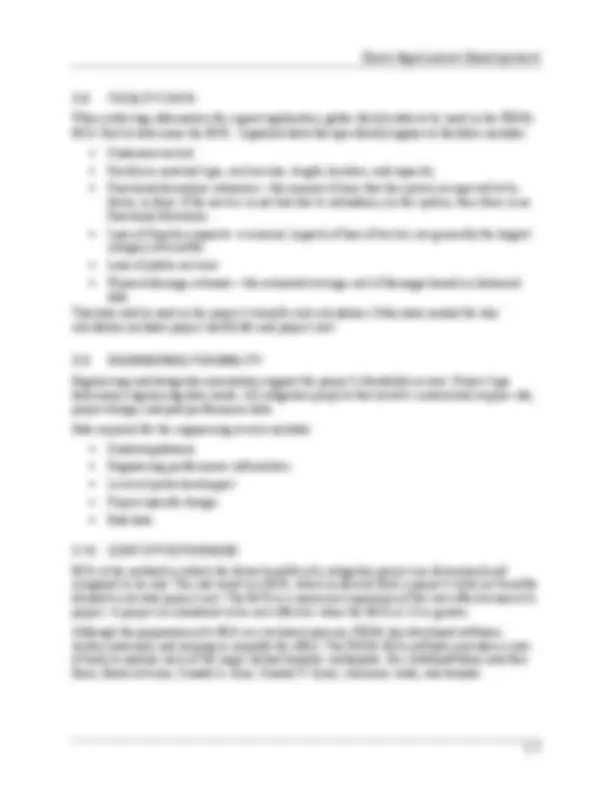

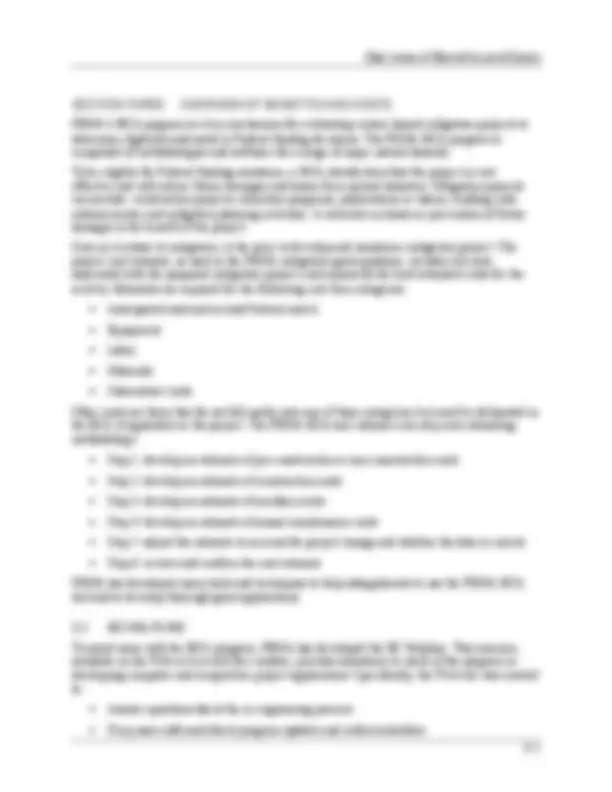
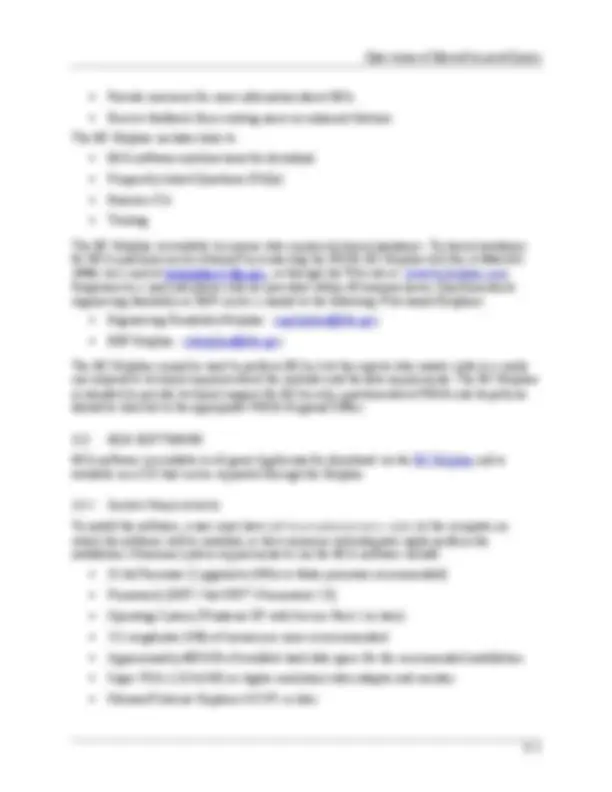
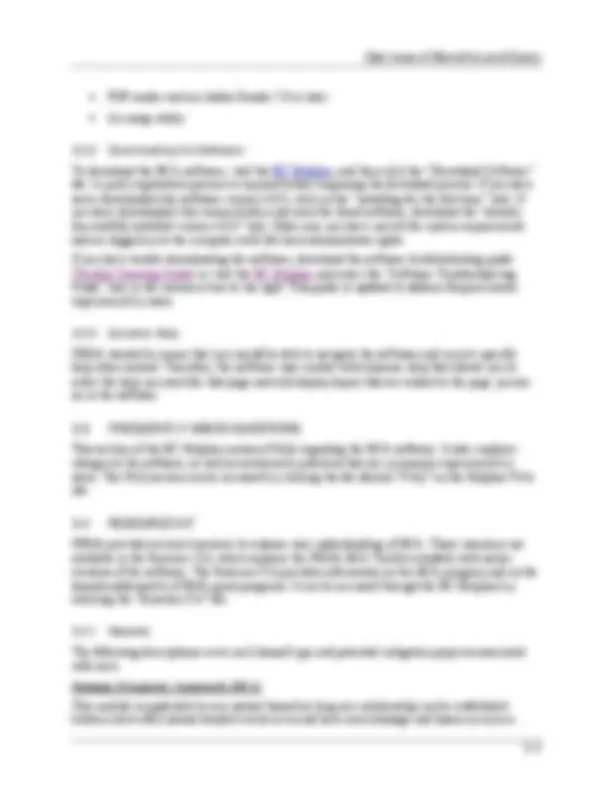
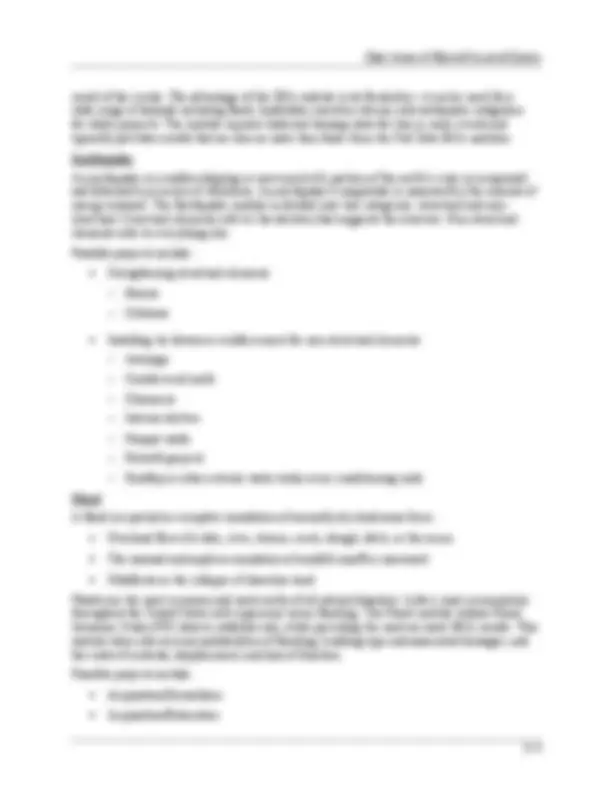
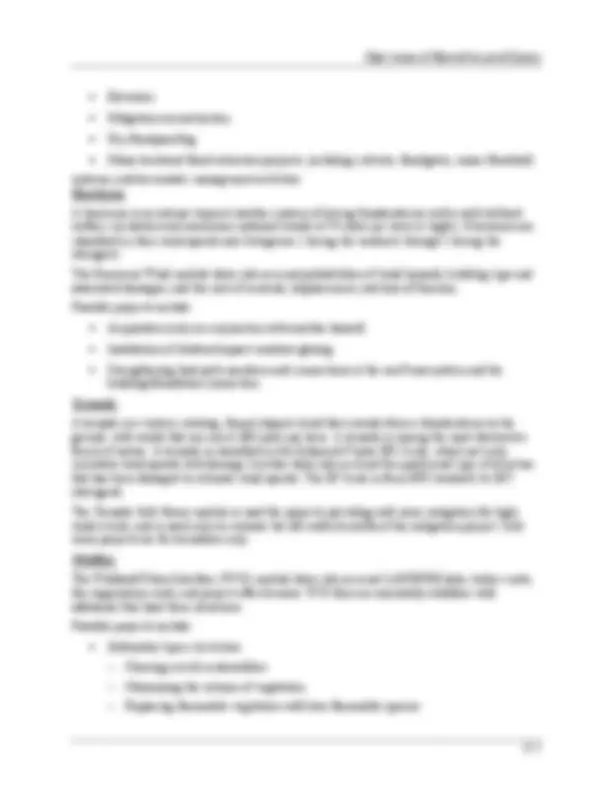
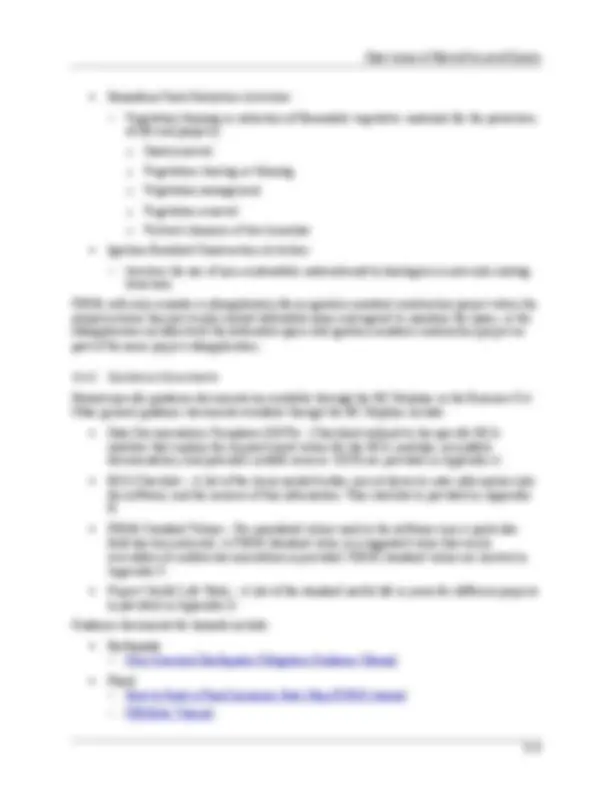
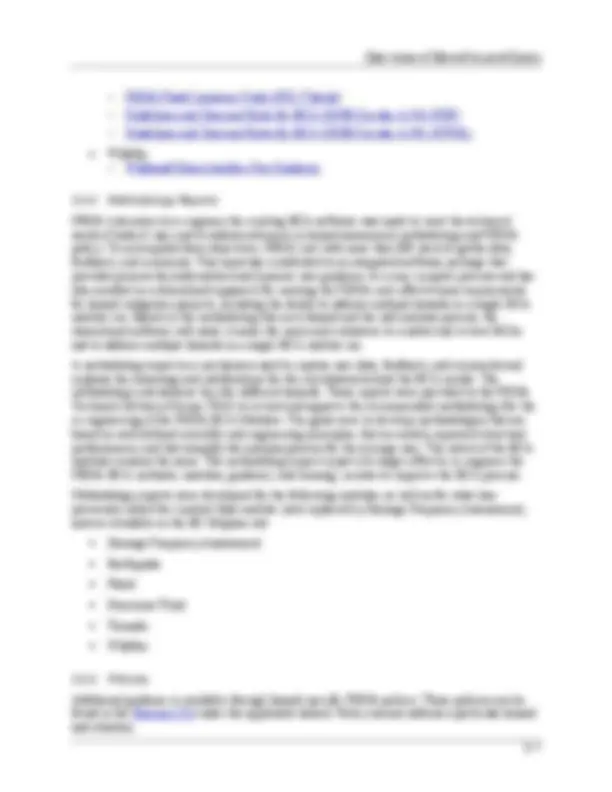
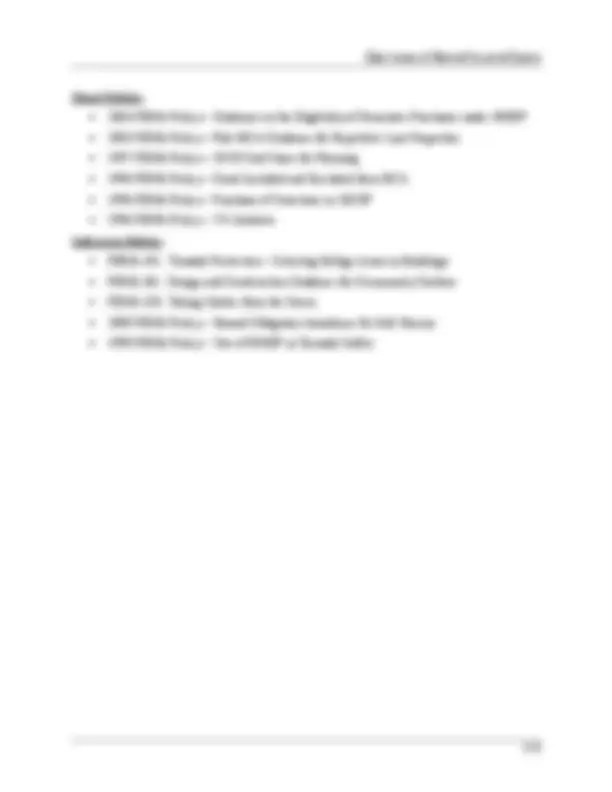
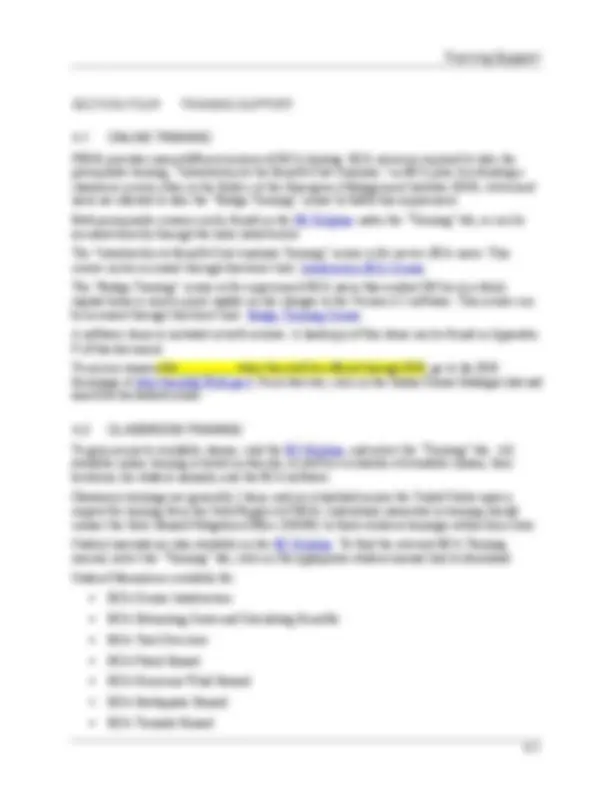


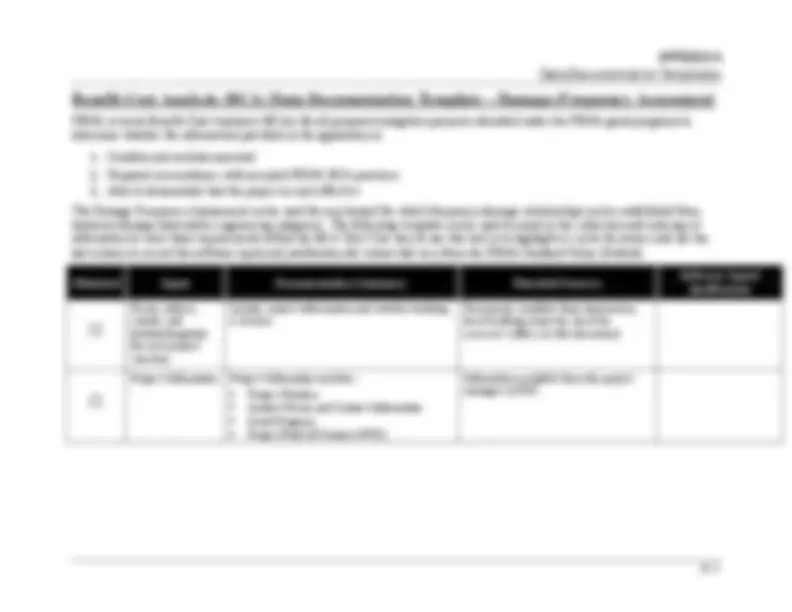
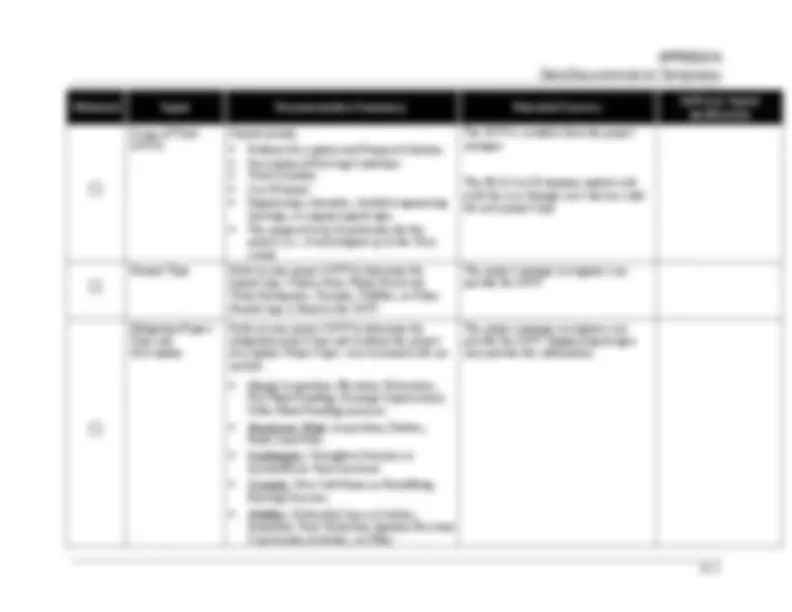
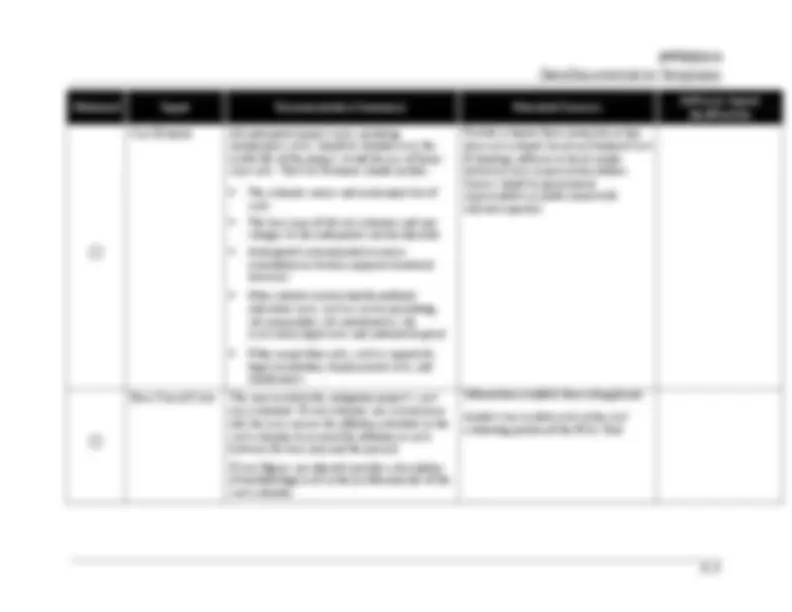
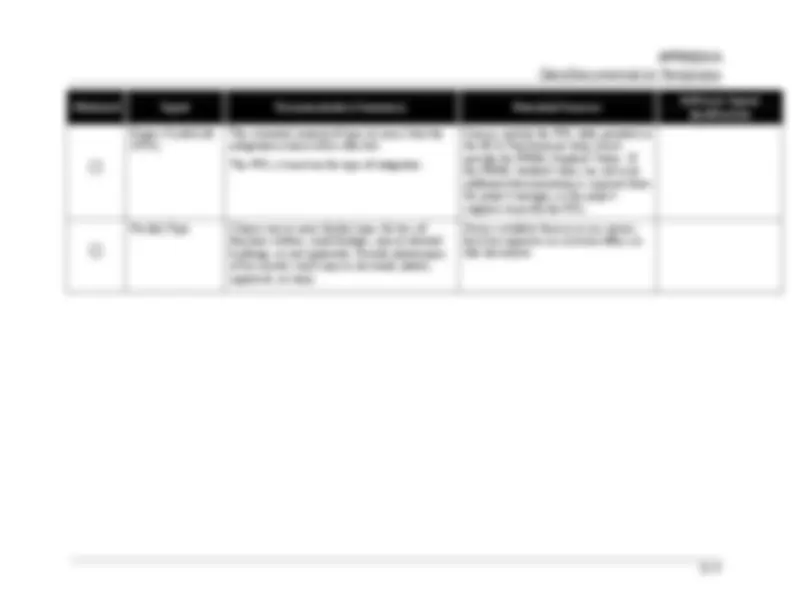
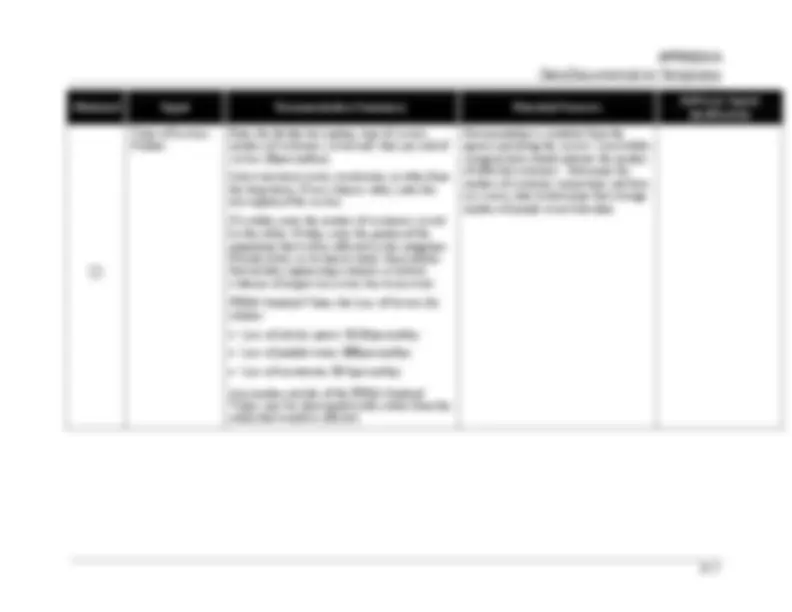
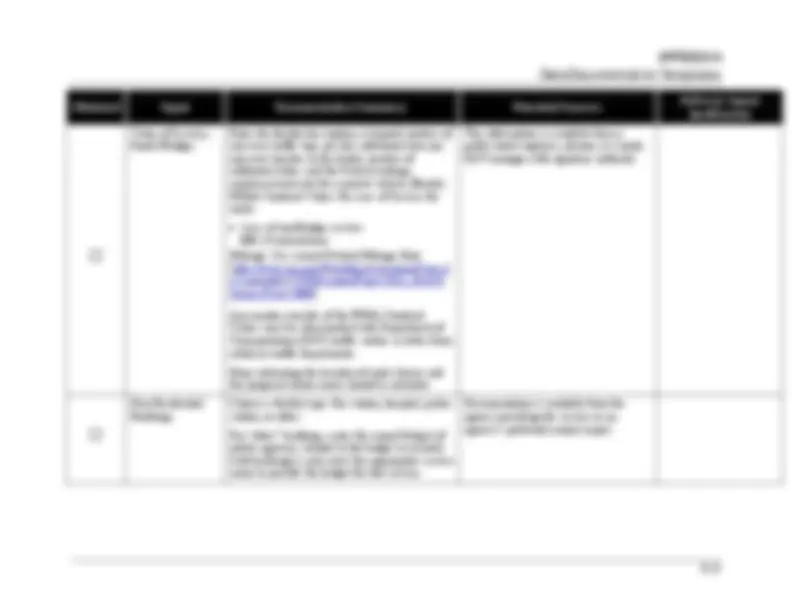
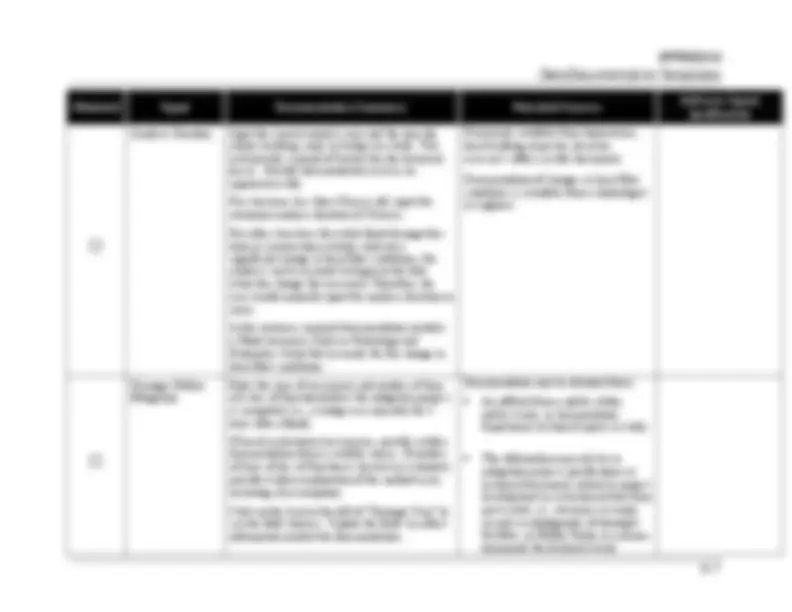
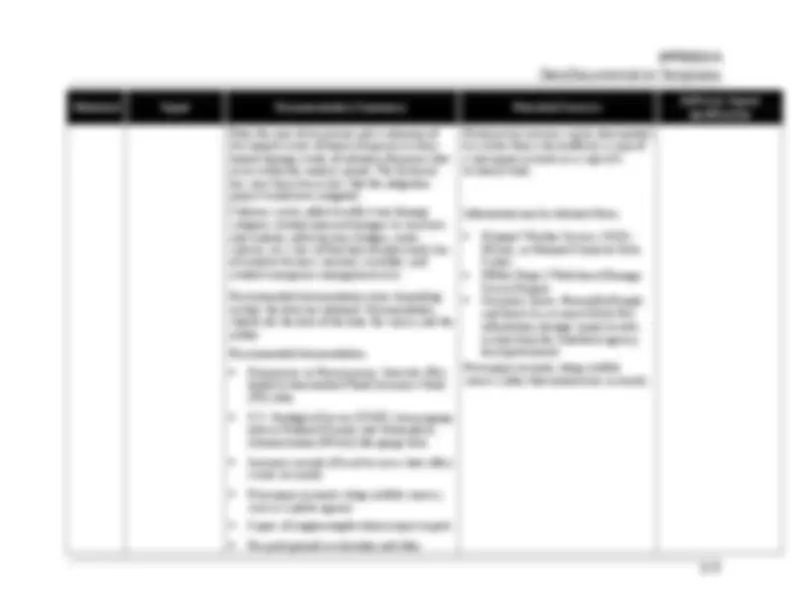
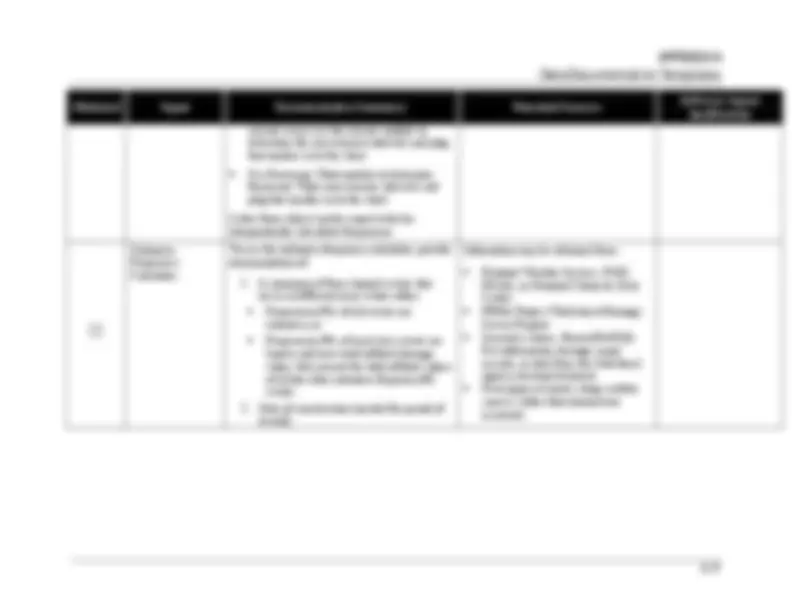
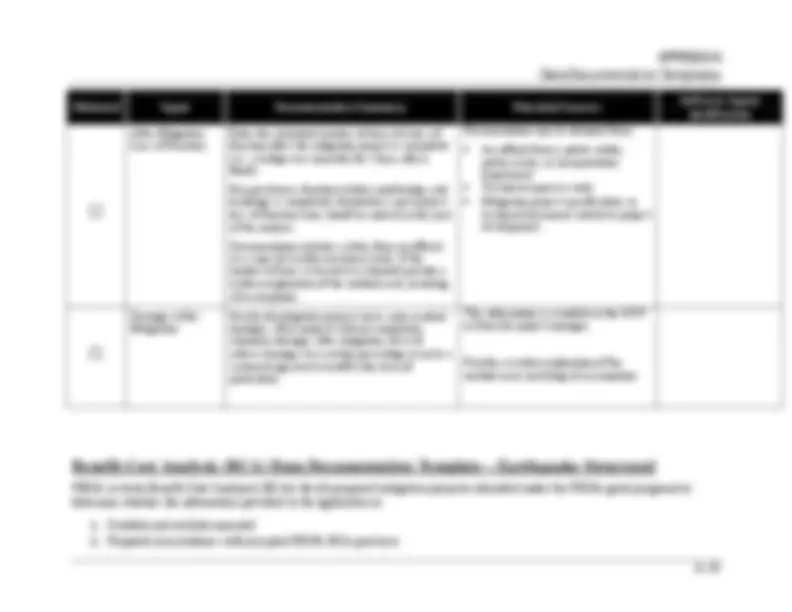
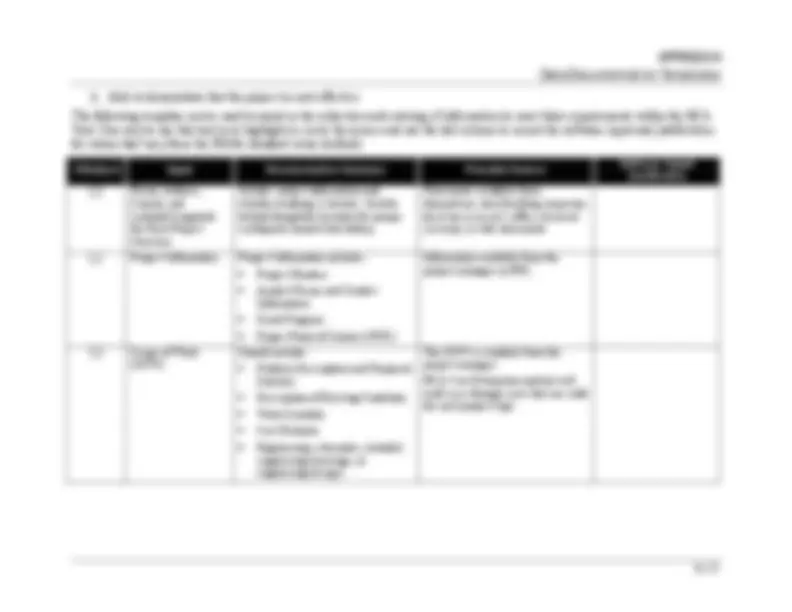
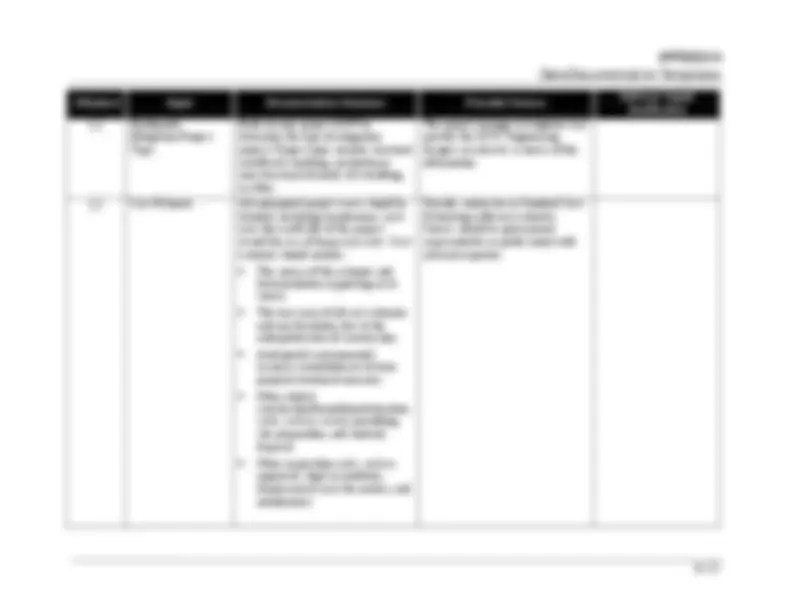
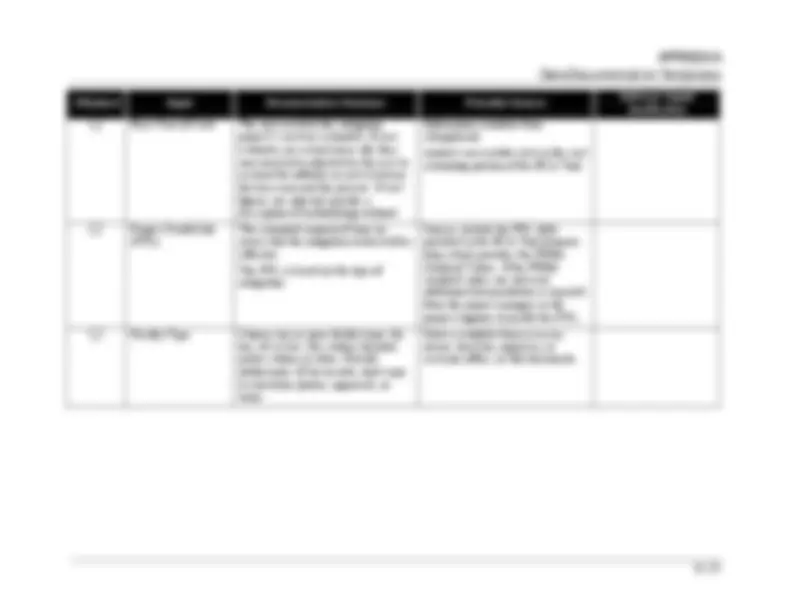
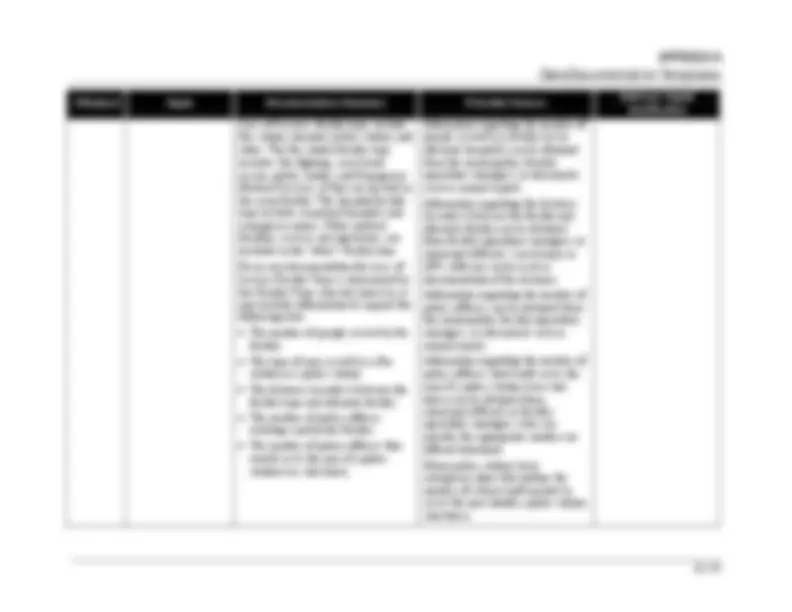
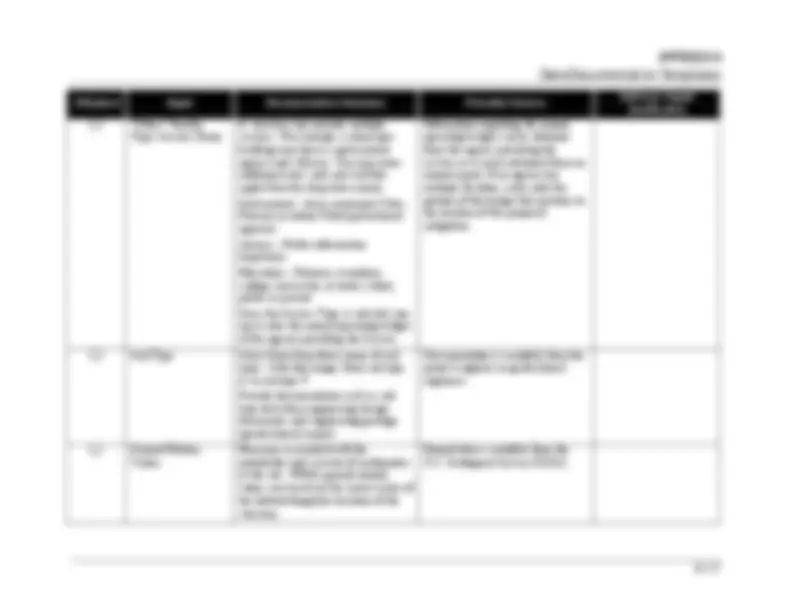
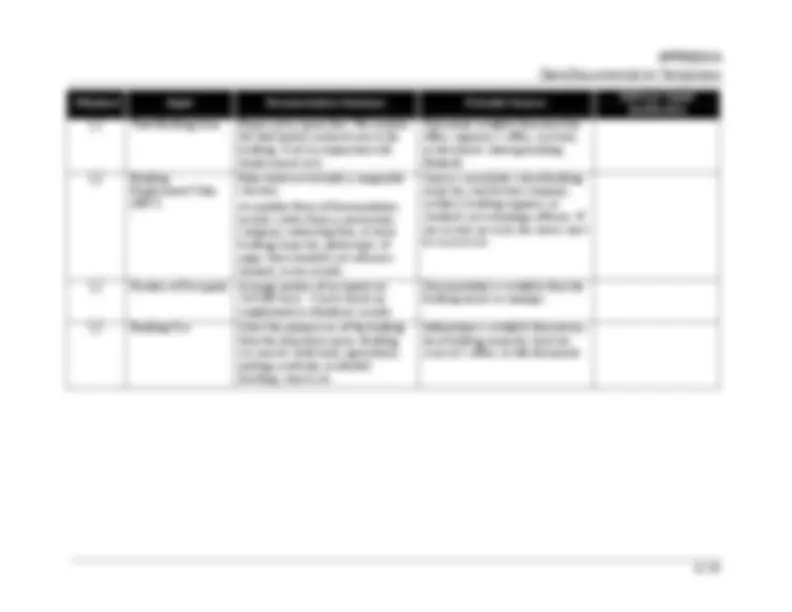
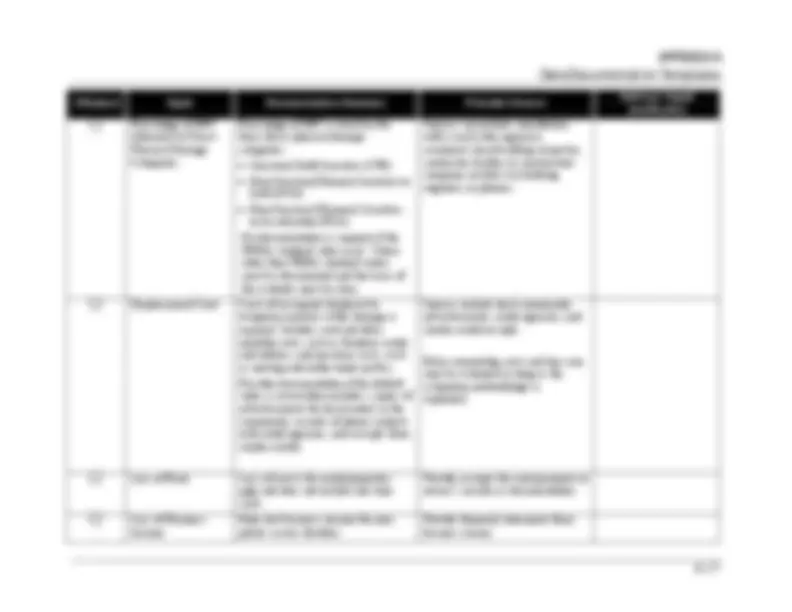
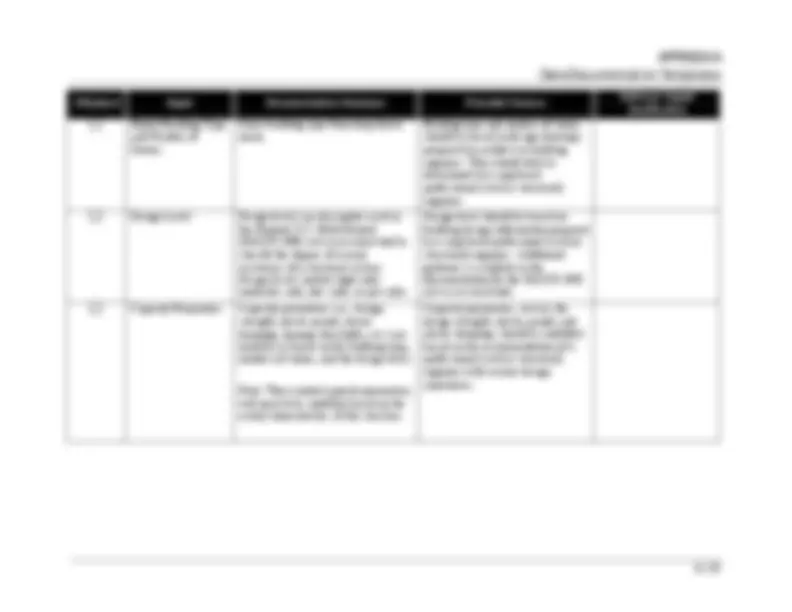
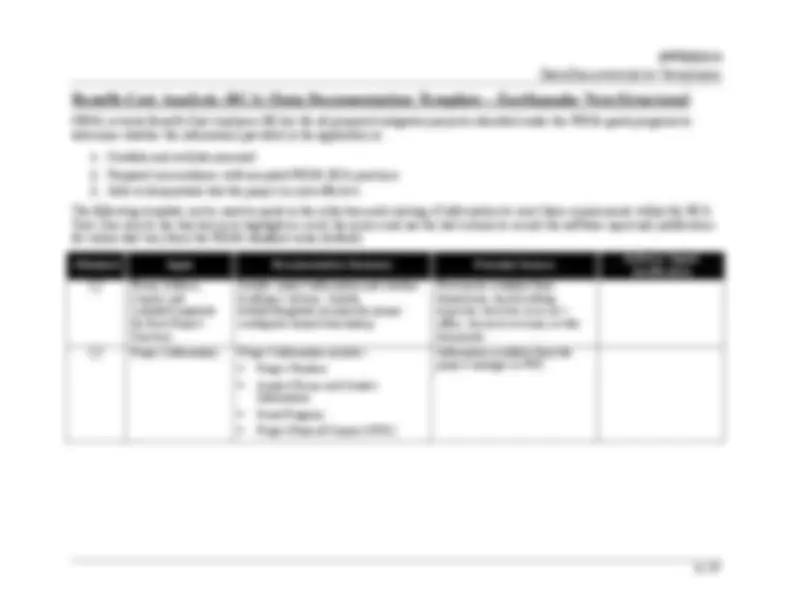
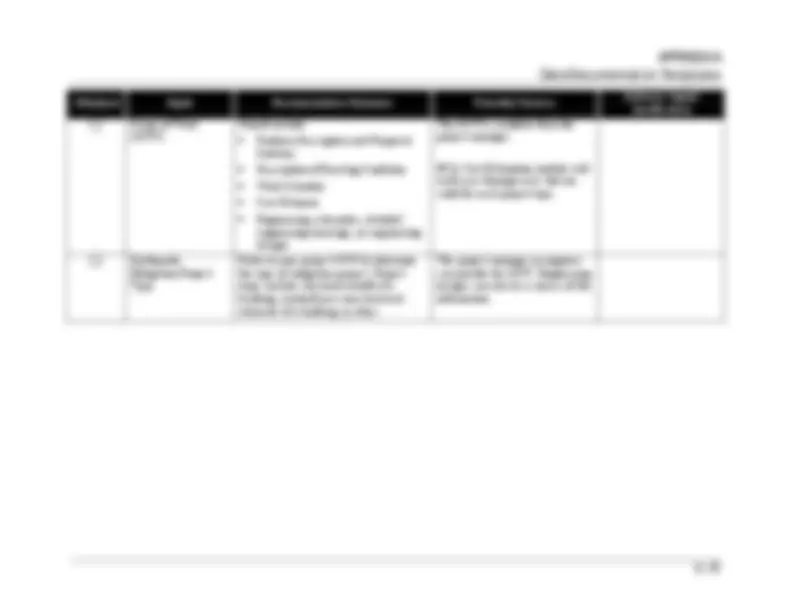
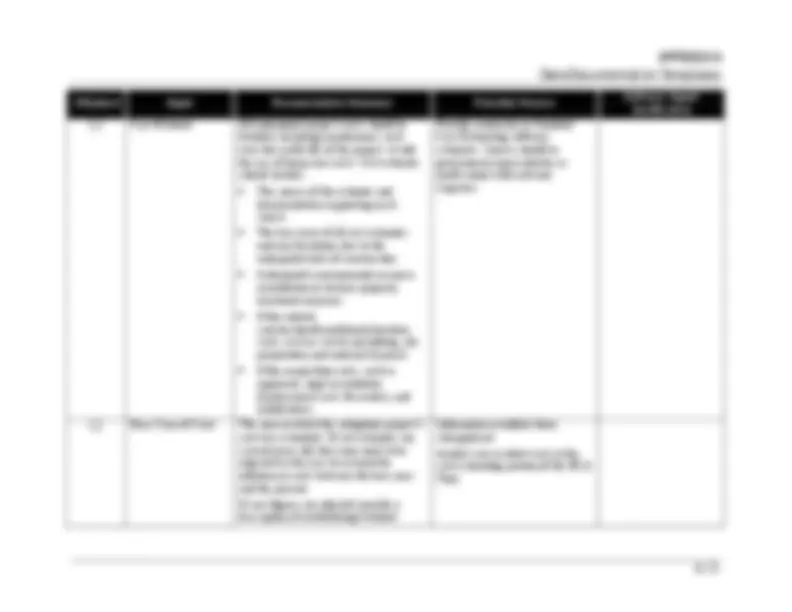
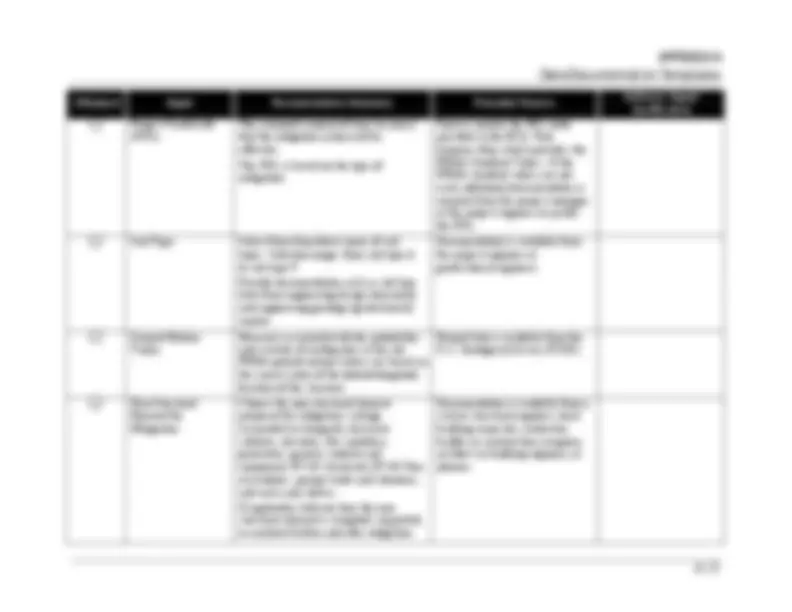
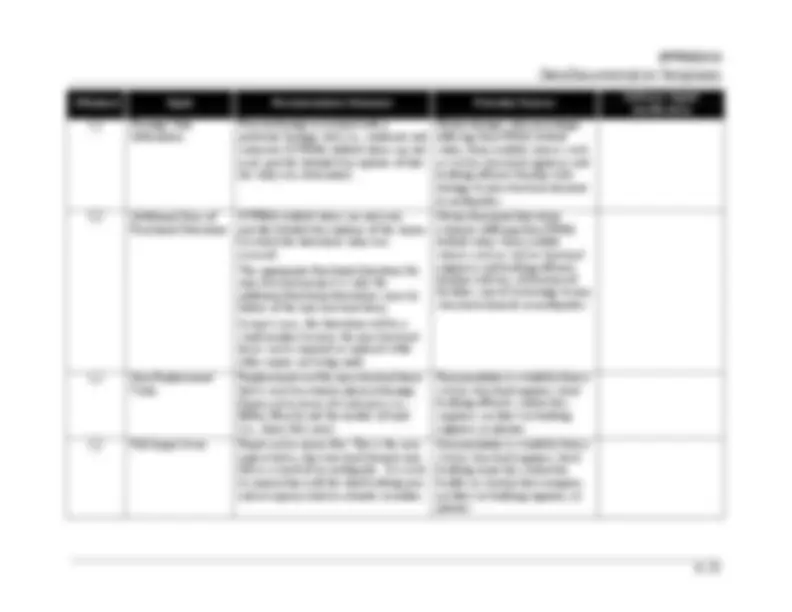
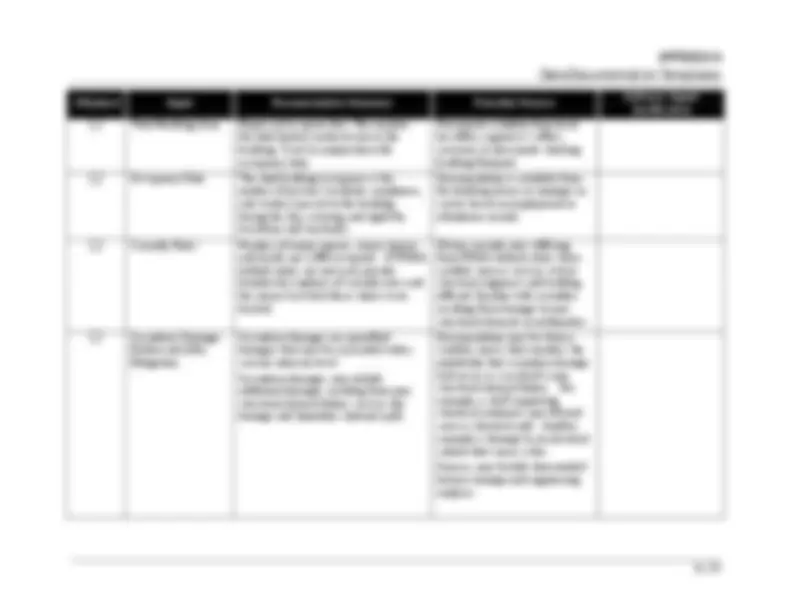
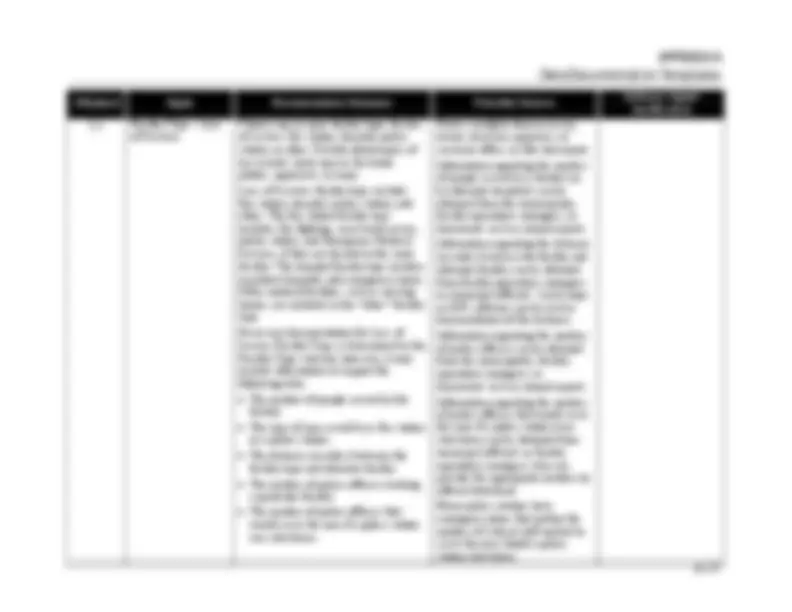
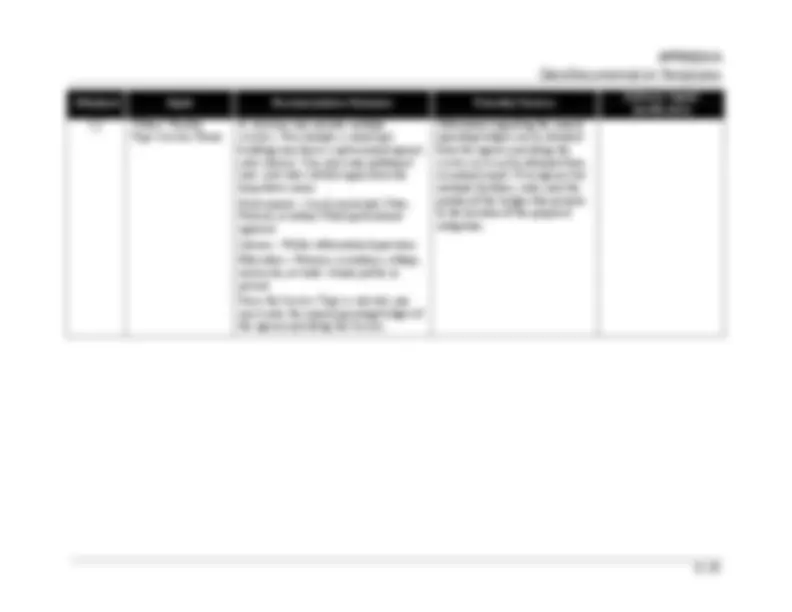
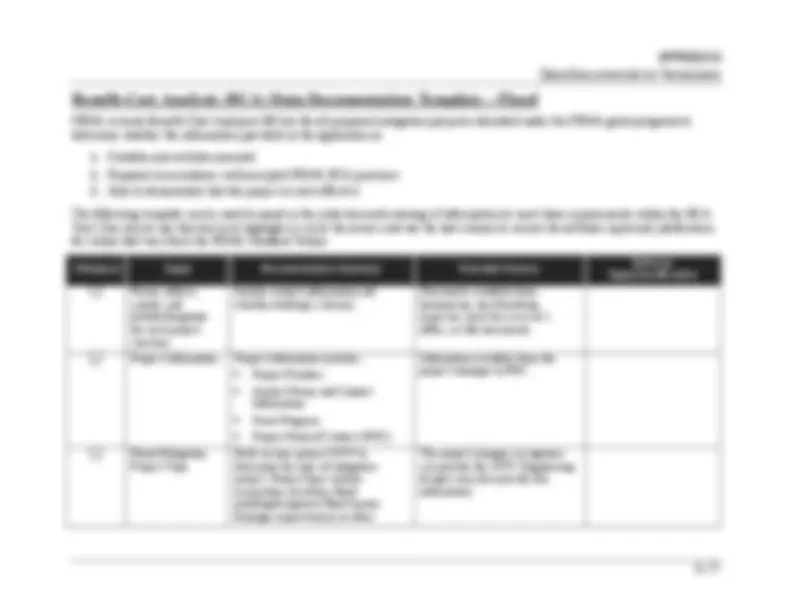
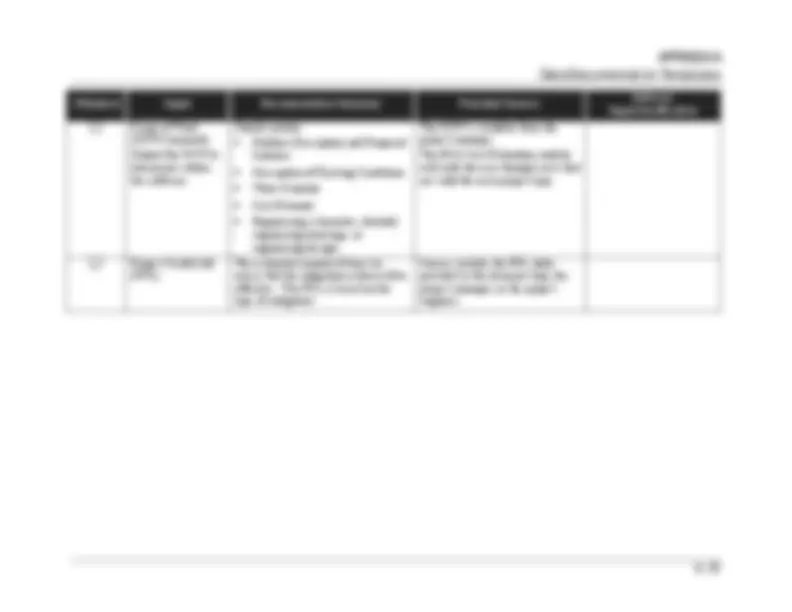
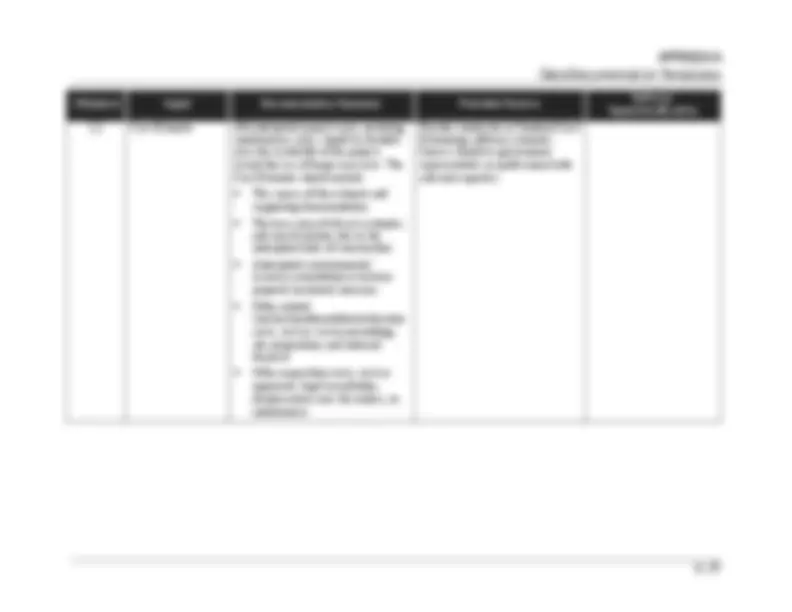
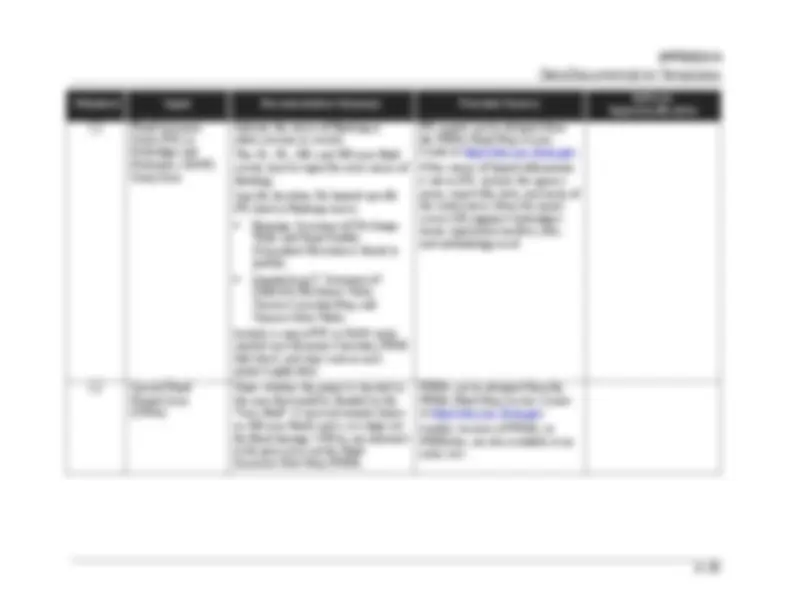
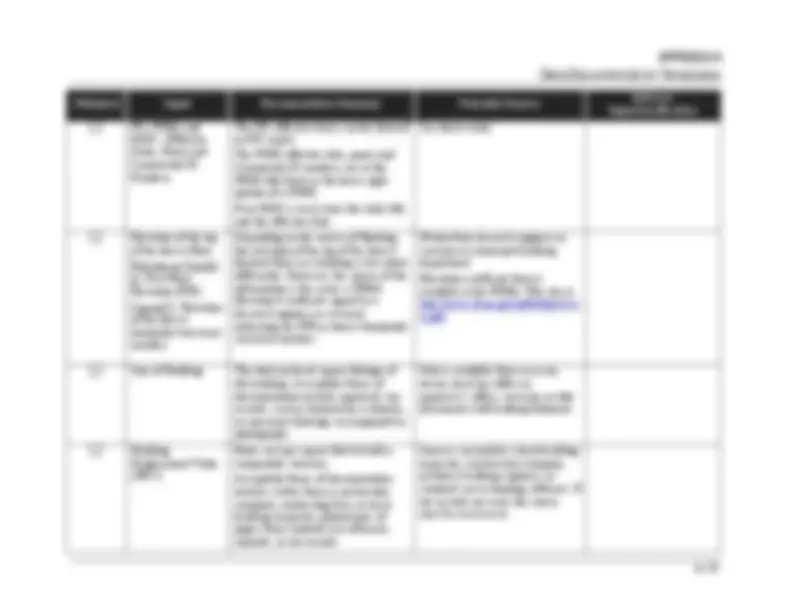
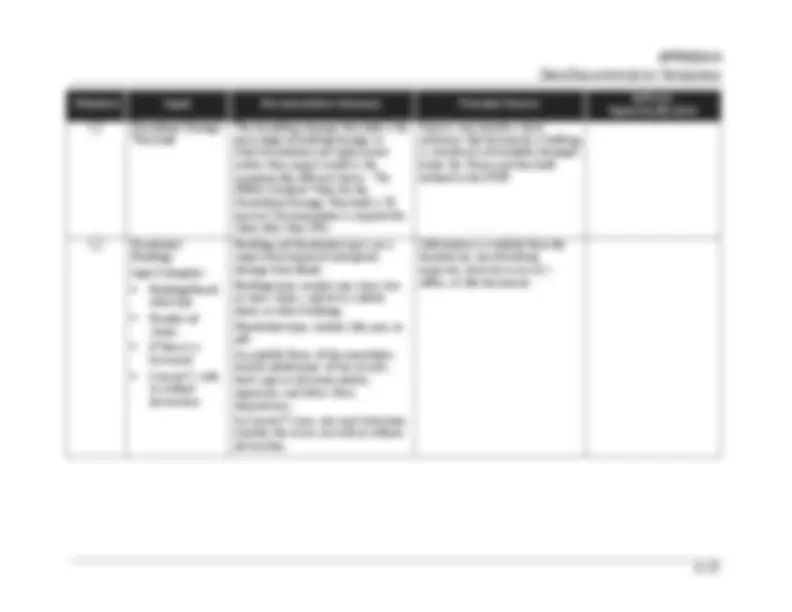
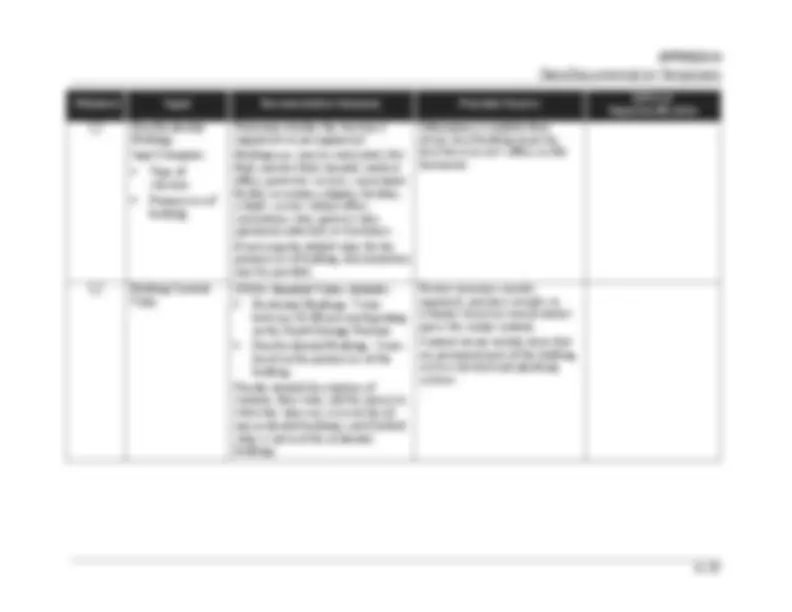
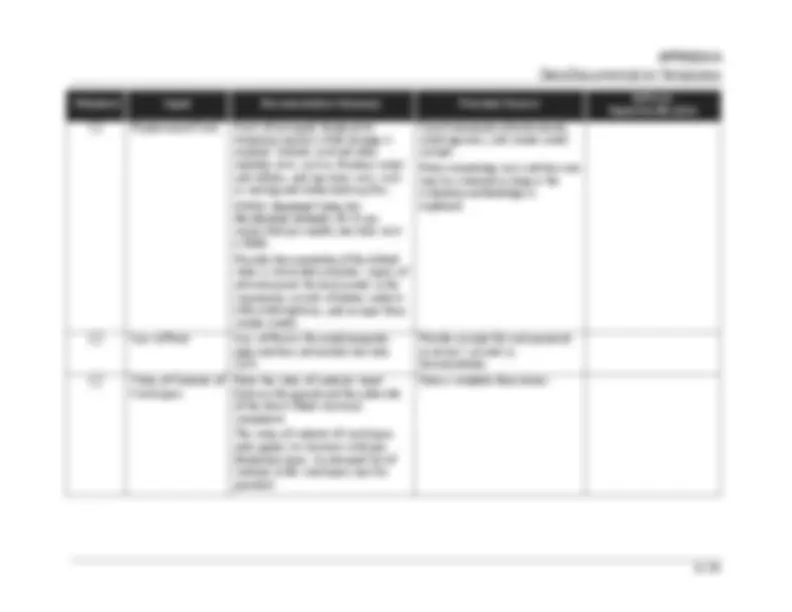
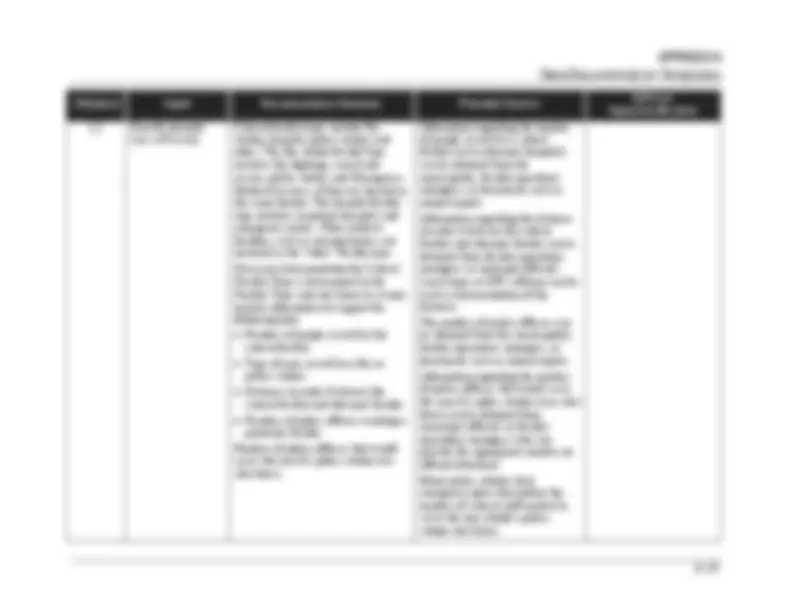
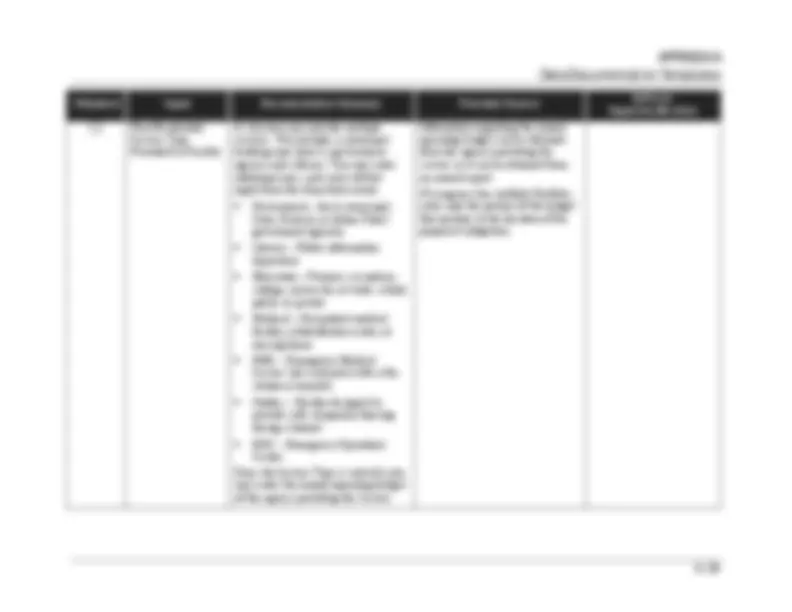
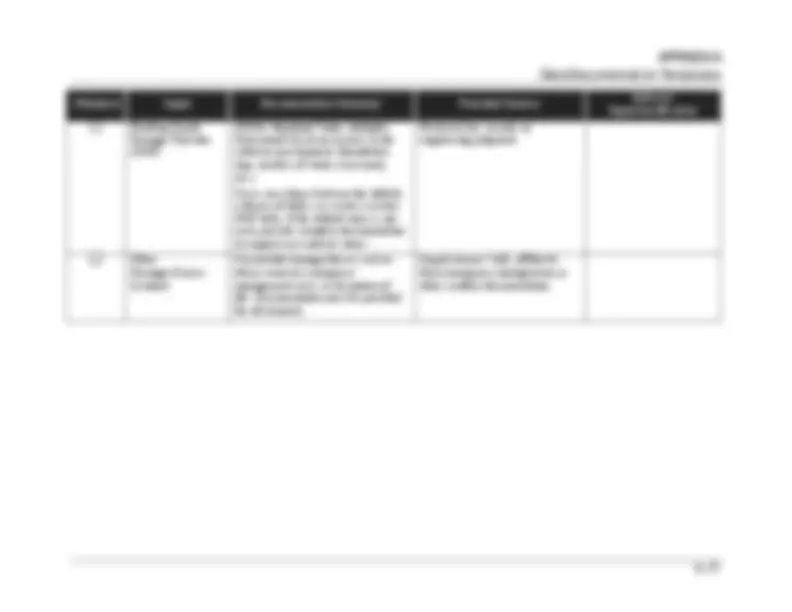
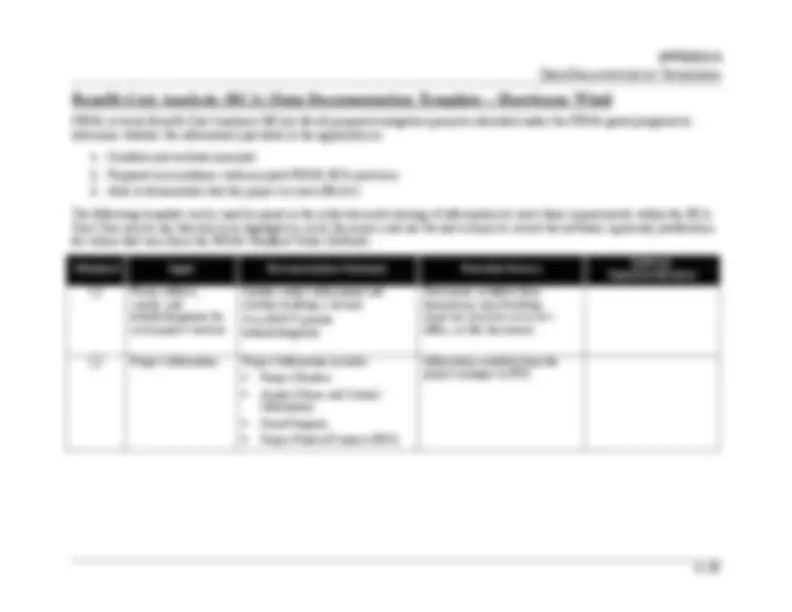
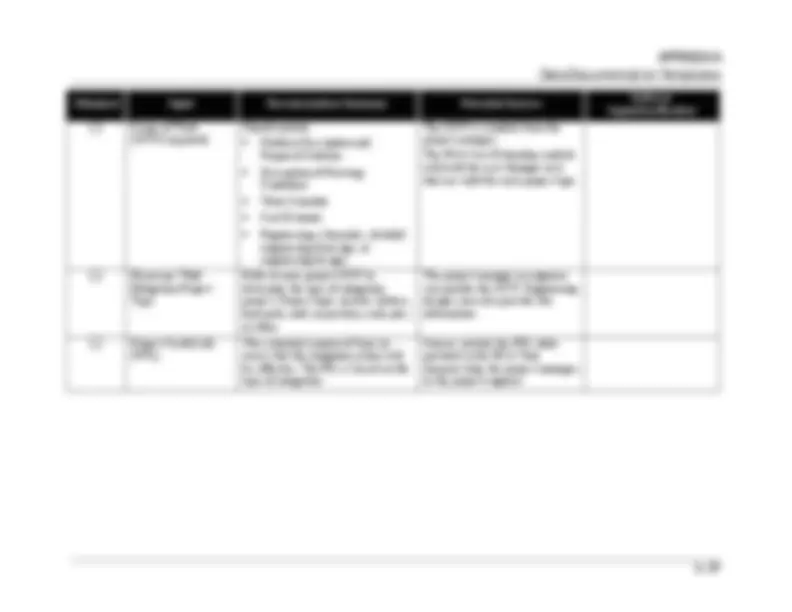
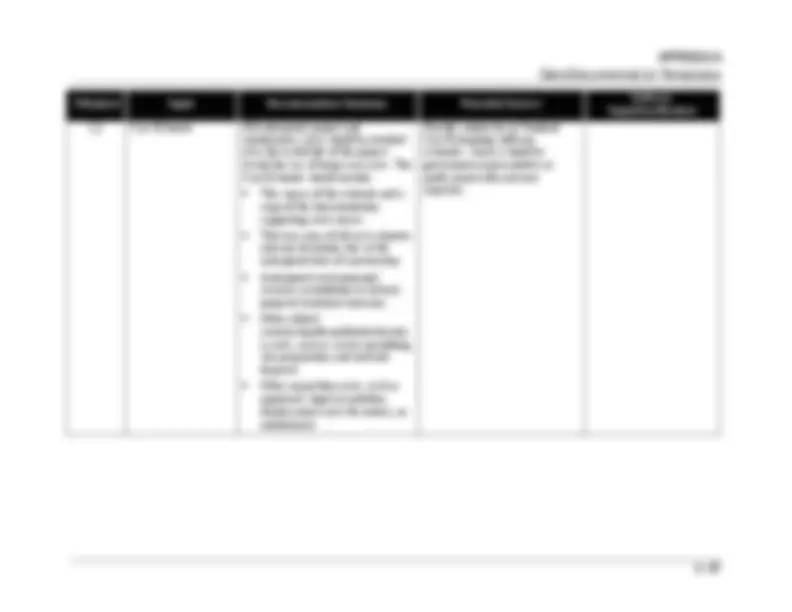
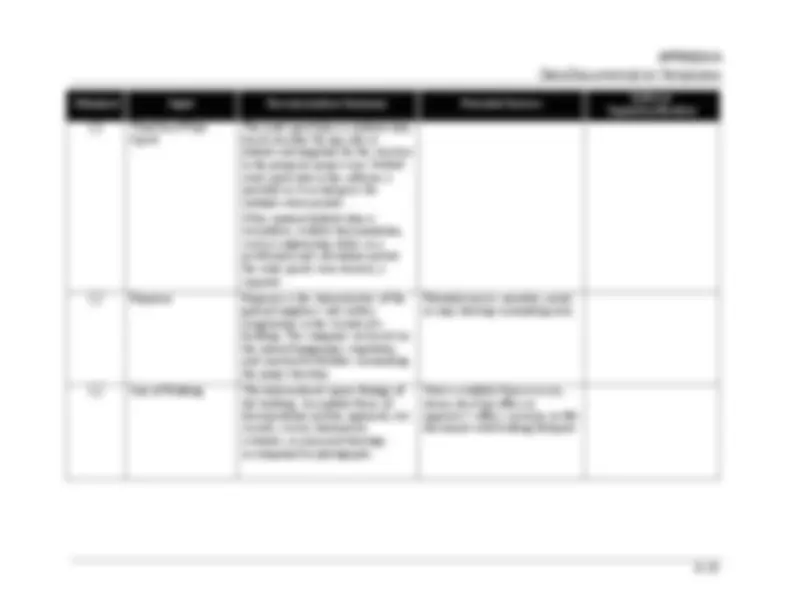
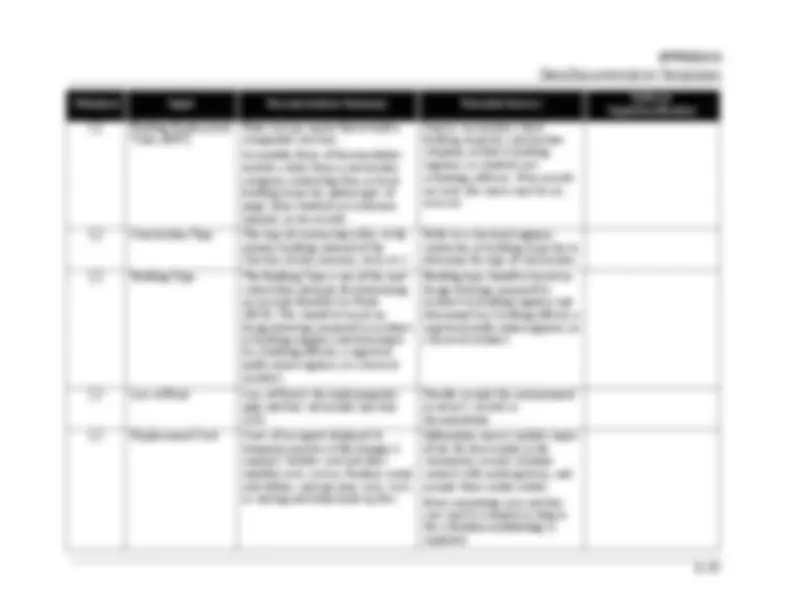
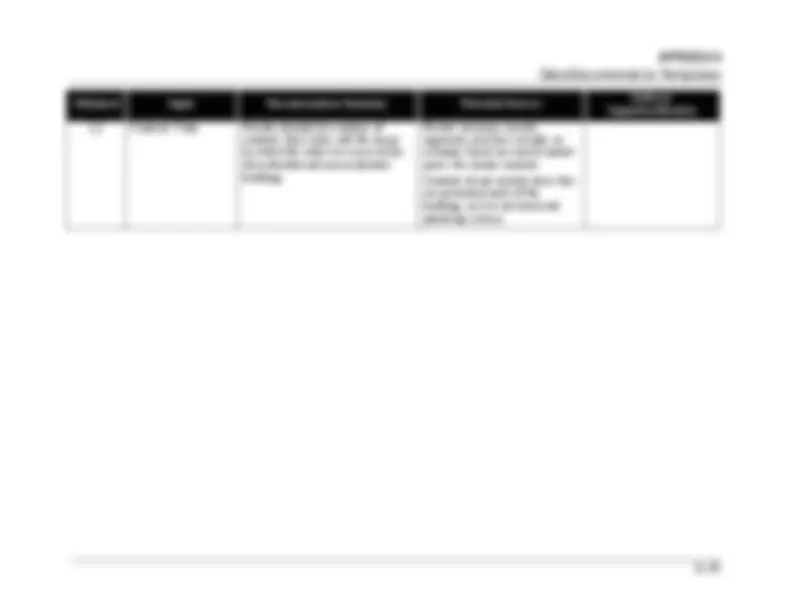
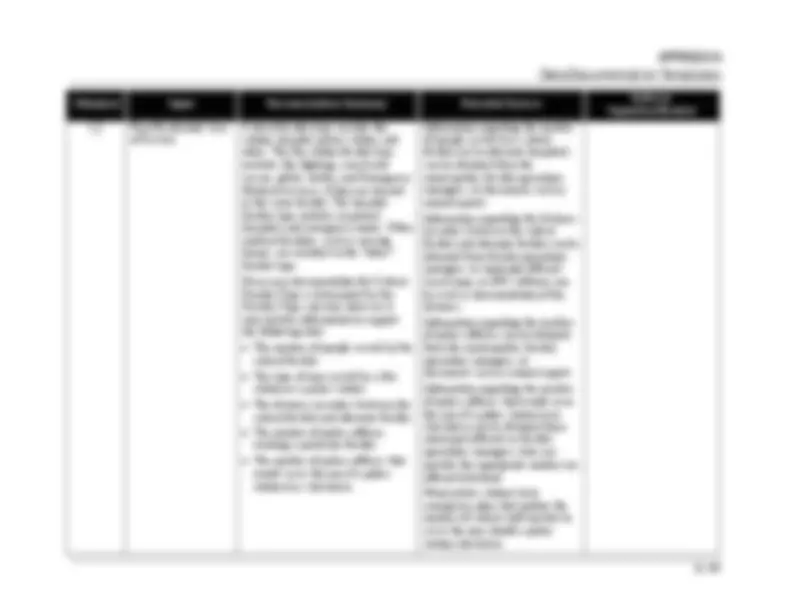
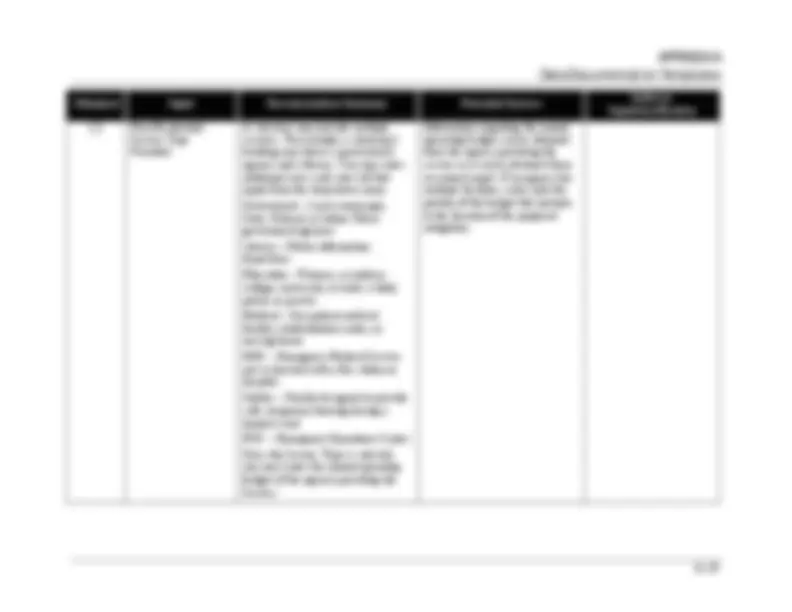
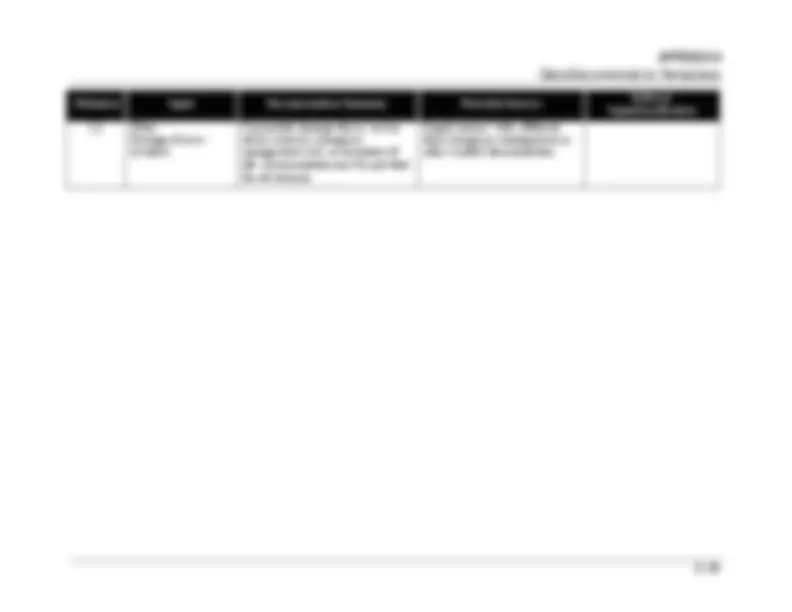
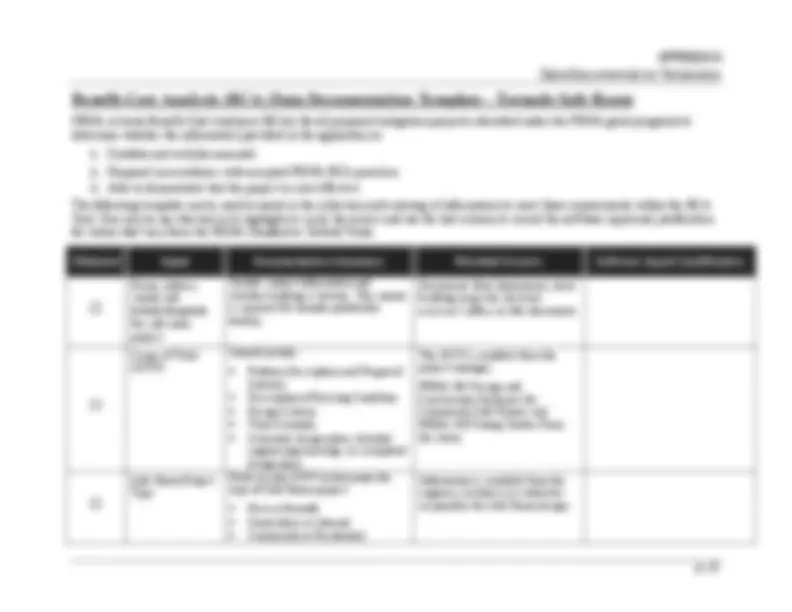
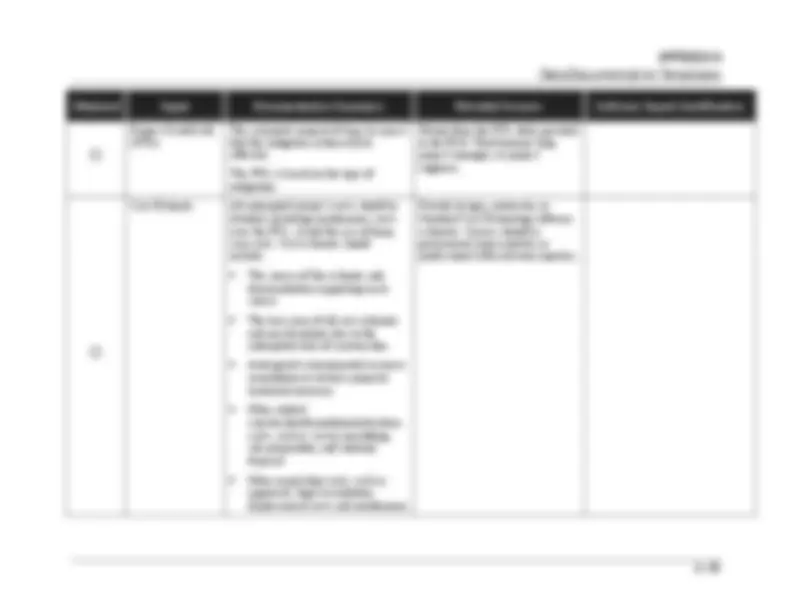
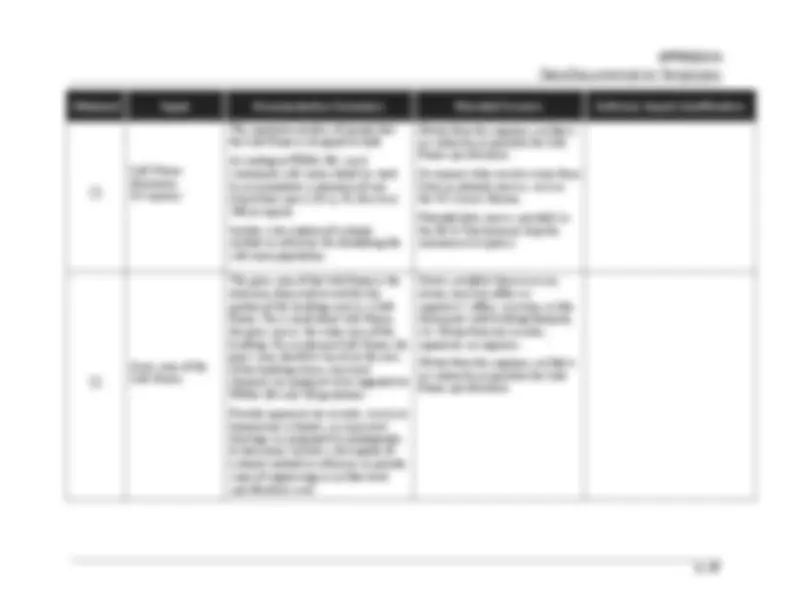
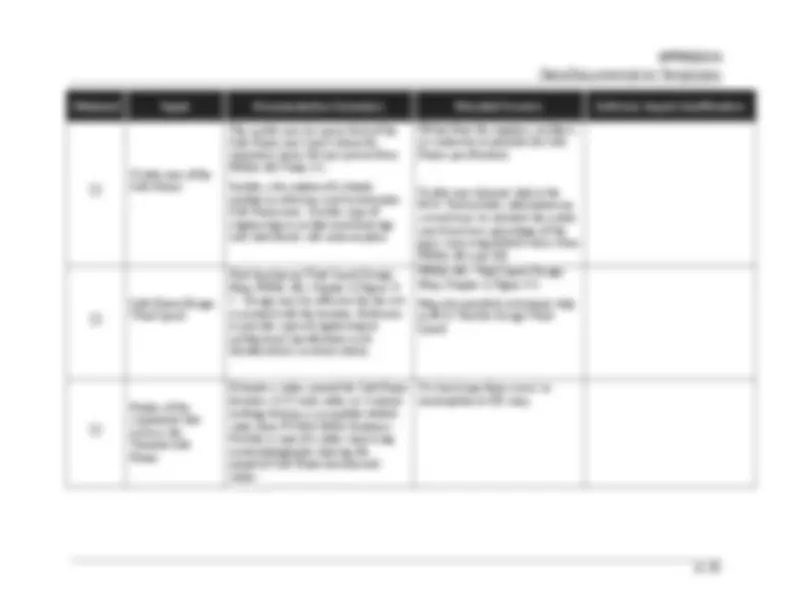
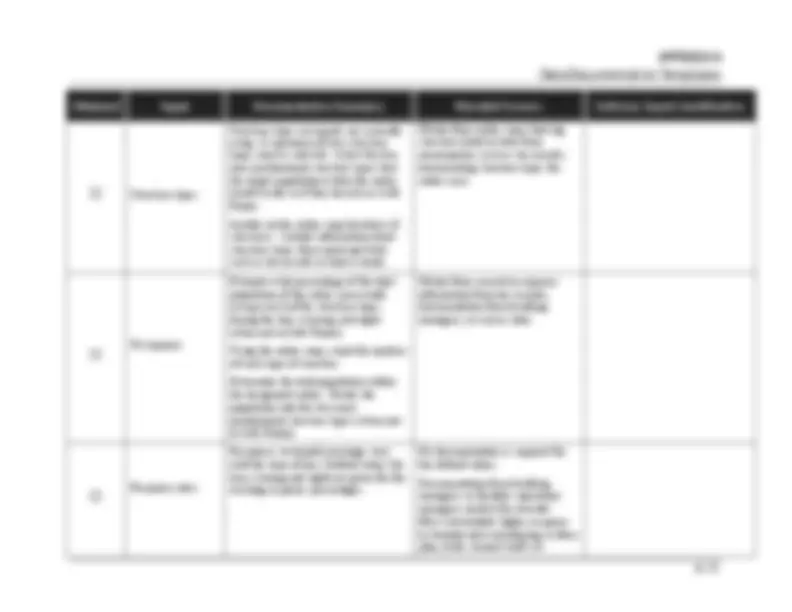
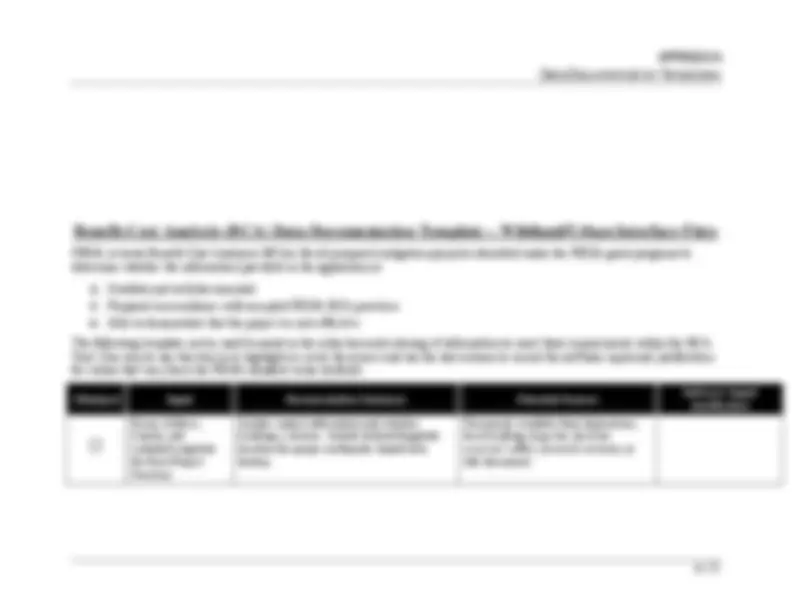
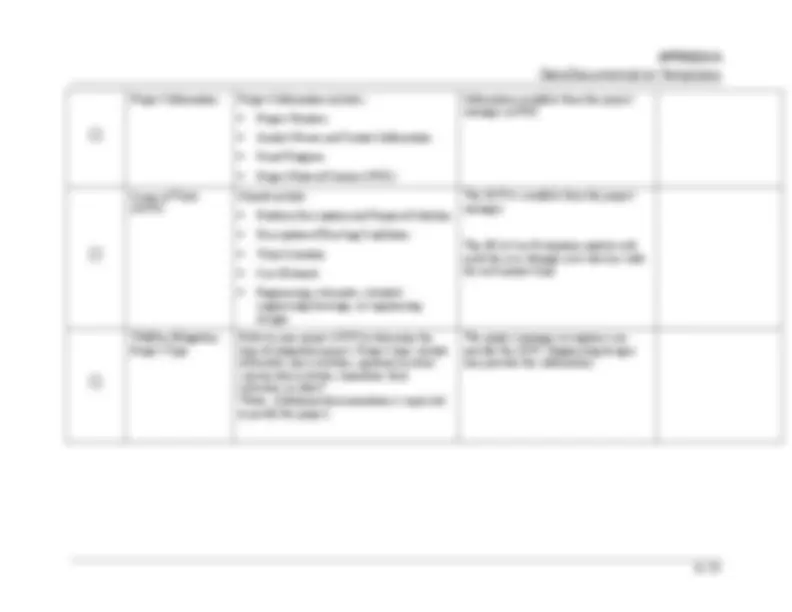
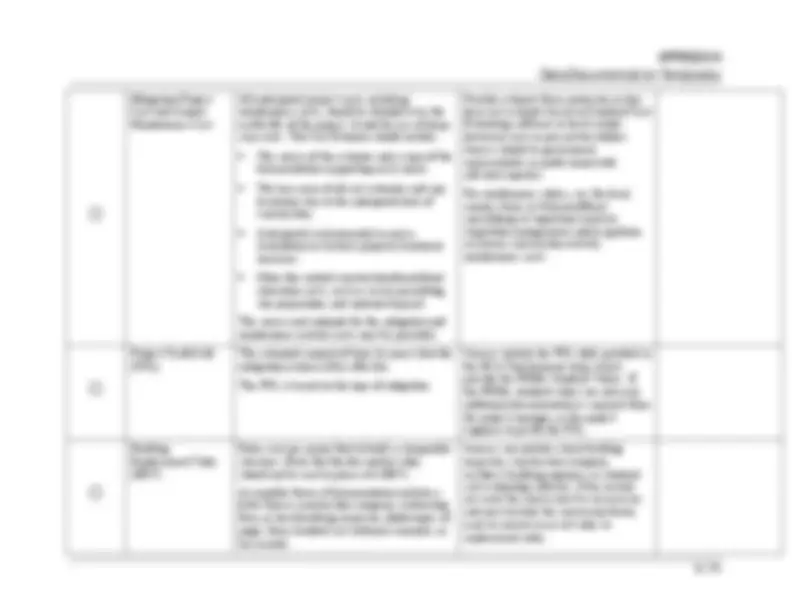
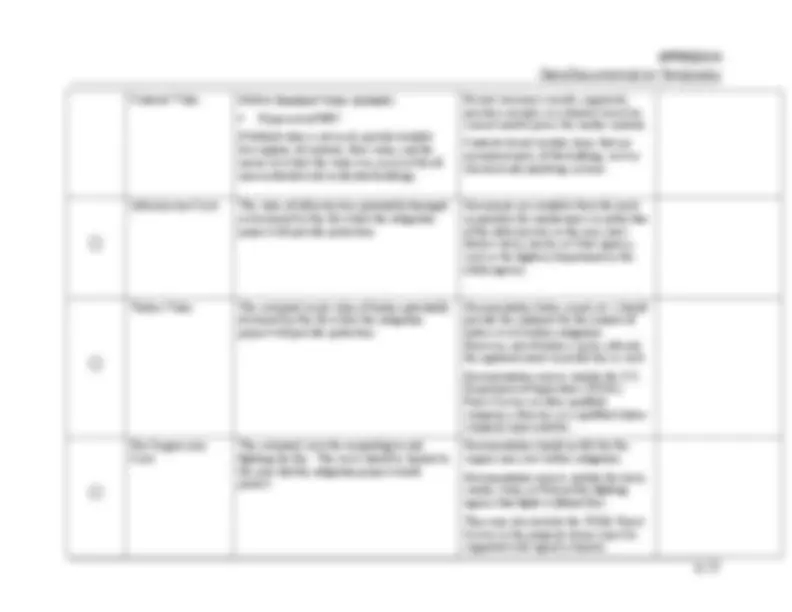
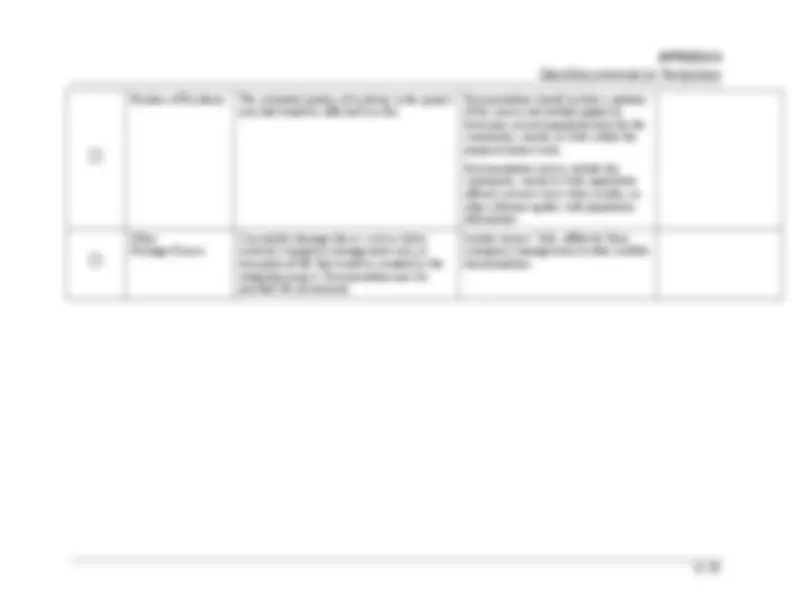

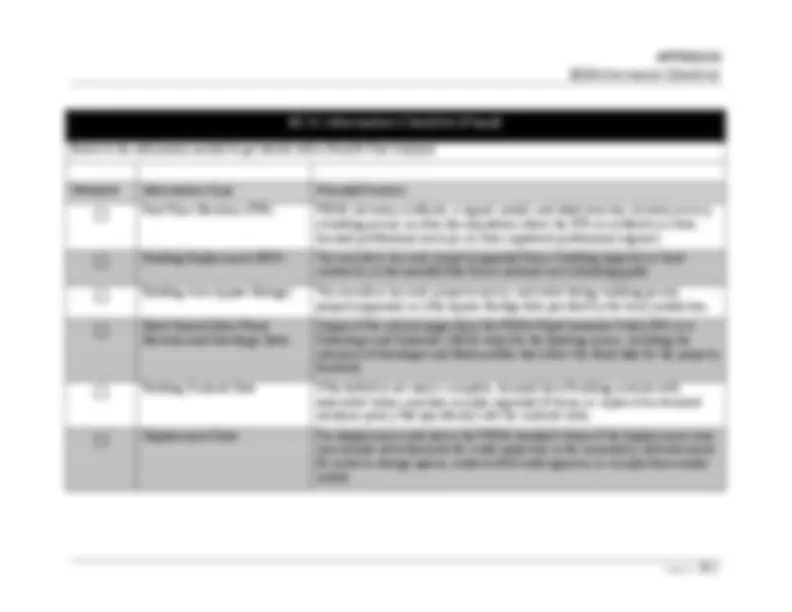
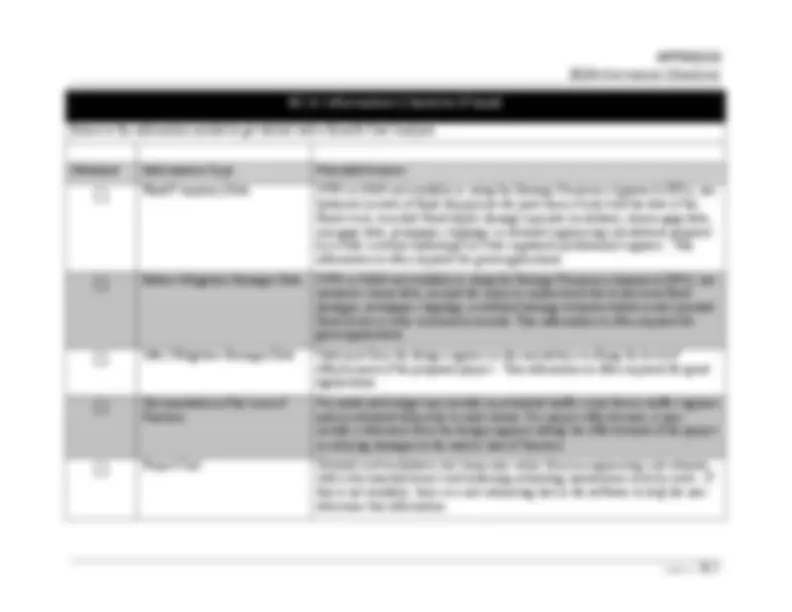



Study with the several resources on Docsity

Earn points by helping other students or get them with a premium plan


Prepare for your exams
Study with the several resources on Docsity

Earn points to download
Earn points by helping other students or get them with a premium plan
Community
Ask the community for help and clear up your study doubts
Discover the best universities in your country according to Docsity users
Free resources
Download our free guides on studying techniques, anxiety management strategies, and thesis advice from Docsity tutors
Benefit-Cost Analysis Re-engineering – The re-engineering of the FEMA BCA ... FEMA Map Service Center– Provides flood hazard mapping information to the.
Typology: Study notes
1 / 108

This page cannot be seen from the preview
Don't miss anything!





























































































TABLE OF CONTENTS
Term Definition
A Zone The 100-year floodplains (except Zone V areas) shown on a community’s FIRM. There are five types of Zone A areas: A: An approximate 100-year floodplain where no Base Flood Elevations (BFEs) or 100-year flood elevations are provided. A#: Numbered Zone A areas (e.g., A7 or A14), where the FIRM shows a Base Flood Elevation in relation to the NGVD. AE: 100-year floodplain where Base Flood Elevationsare provided. Zone AE delineations are used on newer FIRMs instead of A# Zones. AO: 100-year floodplain with sheet flow, ponding, or shallow flooding. BFE depths (feet above grade) are provided on t he FIRM.AH: 100-year floodplain with shallow flooding. Base Flood Elevations in relation to NGVD are provided on the FIRM. Same definition as Zone A.
Acquisition A mitigation project where an asset, usually a building, is purchased by the Federal, State, or local government as a means to prevent future damages. Acquisition is often combined with demolition to eliminate future damages completely by removing the building from the flood hazard area.
Acre Commonly used land area unit of measure(1 acre = 43,560 square feet, and 640 acres = 1 square mile).
Active Mitigation Measures
Require human intervention to operate properly and are usually less effective than passive mitigation measures.
AE Zone 100-year floodplain where Base Flood Elevations are provided. Zone AE delineations are used on newer FIRMs instead of A# Zones. Same definition as Zone AE.
After-mitigation The conditions that exist after a mitigation measure is implemented and the impacts of the targeted natural hazard are reduced or eliminated.
Aggregation The process of combining two or more buildings and functions in a single Benefit- Cost Analysis.
Approximate Studies Floodplain mapping that contains the approximate delineation of the 100-year floodplain boundaries. There are no Base Flood Elevations and floodway delineations. There are no computer modules associated with an approximate study.
Architectural Elements
Exterior elements on a building or structure, including cornices, corbels, decorative features, and lighting. These and other architectural elements are common among historic, unreinforced masonry buildings. Such elements are generally constructed of stone or other heavy, brittle materials, and often fail during an earthquake due to poor anchoring or bracing.
Assets Physical elements (i.e., buildings, infrastructure, or utilities) that have potential for damage from natural hazard events.
Term Definition
Benchmark Date when a building code began to contain lateral force resisting requirements sufficient for a life safety performance level. Knowing the building type, date of construction, date of the building code used, and a history of seismic upgrades, a building owner can determine if their building is pre- or post-benchmark.
Benefits Future losses prevented or reduced by a mitigation project. The benefits counted in a BCA are the present value (in dollars) of the sum of the expected annual avoided damages over the project useful life.
BFE The Base (100-year) Flood Elevation having a 1 percent chance of being exceeded in any given year. The Base Flood Elevation is determined by statistical analysis for each floodplain area and designated on FEMA FIRMs.
Bounded Analyses Methods for streamlined Benefit-Cost Analysis of hazard mitigation projects. See the Tutorial Section for more information.
Braced Frames Braced building frames are generally constructed with steel diagonal braces that provide lateral load resistance, and are most commonly encountered in rigid steel frame buildings.
BRV Building Replacement Value^ (i.e., the cost to replace the building with a functionally equivalent building of the same size, based on the current cost of labor and materials). The BRV is not the same as the current market value of the building.
Building A structure that has walls and a roof and is occupied on a regular basis.
Building Area The square footage of the enclosed building. This value includes heated and unheated areas, but excludes open porches, decks, and carports.
Building Envelope Is the area that separates conditioned space from unconditioned space. The code is only concerned with the “building envelope.”
C Zone Area of minimal flood hazard usually depicted on FIRMs as areas above the 500- year flood level. Zones B and C may have flooding that does not meet the criteria to be mapped, and may include localized ponding or drainage problems. Same definition as Zone C.
Calibration Point In a BCA, a data point that is known to be accurate, and upon which other elements of the analysis may be based.
Code of Federal Regulations
A Federal government coding system of Federal agency regulations published in the Federal Register. The Title 44 CFR includes all FEMA regulations.
Community A city, village, town, township, borough, parish, county, or other legal governmental entity with the statutory authority to enact floodplain regulations and participate in the NFIP.
Construction Date The year construction of the building started.
Term Definition
Continuity Premium A multiplier (or adjustment) that places a higher dollar value on critical services for Benefit-Cost Analysis. Non-essential services, such as a library, are valued at the daily cost of providing the services. However, services such as fire, police, and medical that are essential to the post-disaster response and recovery are worth more to the community in the immediate post-disaster period. Such services are valued more highly by adding a continuity premium or a multiplier on the normal daily cost of services.
Cost effective In the context of Benefit-Cost Analysis, when the benefits of a hazard mitigation project exceed the project costs (i.e., BCR > 1.0).
Critical Services Services that either directly affect life safety or services that, if lost, would have a large economic impact on a community.
Cross-section Surveyed information that describes the geometry of the watercourse and the floodplain at a particular point along the watercourse.
Datum A common vertical elevation reference point, usually in relation to sea level.
DDF Depth-Damage Function , also known as a Depth-Damage Curve. A way of expressing expected flood damages for various types of buildings, their contents, or their functions at different water depths. For floods, this relationship is expressed as depth versus percentage damage to the element being considered.
Demolition The destruction and removal of an acquired property as a means to eliminate future damages from natural hazards.
Demolition Threshold
The amount of damage, expressed as a percentage of the BRV, at which a building is considered a total loss and would not be repaired. In general, buildings that are old or in poor condition have lower demolition thresholds than new or high-quality buildings.
Depth (^) For floods, the depth of flooding (in feet) above the first floor elevation.
For earthquakes , the distance, in miles below sea level, to the point of origin (hypocenter) of an earthquake. A defaultdepth for shallow earthquakes is 20 miles below sea level.
Detailed Studies Floodplain mapping that contains detailed delineation of the 100-year floodplain boundaries. The mapping includes Base Flood Elevation and floodway delineations, and is based oncomputer models and topographic (or elevation) data.
DFE Design Flood Elevation.
Direct Benefits The reduction or prevention of future losses to buildings, contents, or public facilities from natural hazards.
Discharge Volume of water flow measured incubic feet per second (cfs).
Term Definition
FEMA BCA Program
The methodologies, modules (i.e., software), module standard and default values, guidance documents, user guides, analyst tools, and FEMA policy memorandum that provide specific requirements and guidance for preparing FEMA Benefit-Cost Analysis.
FEMA Mitigation Grant Programs
Grants provided to States and local governments to implement long-term hazard mitigation measures. The purpose of the programs is to reduce the loss of life and property due to natural disasters. These programs include Flood Mitigation Assistance (FMA), Hazard Mitigation Grant Program (HMGP), Pre-Disaster Mitigation (PDM), Repetitive Flood Claim (RFC), and Severe Repetitive Loss (SRL).
FFE First Floor Elevation^ or Zero Flood Depth. This is the elevation of the top of the lowest finished floor in a building. The relationship between theFirst Flood Elevation and the Base Flood Elevation at a site determines the extent of flood risk. This elevation does not consider basements or crawl spaces.
FHBM Flood Hazard Boundary Map – An official map of a community, on which FEMA has delineated the approximate boundary of the 100-year floodplain.
FIRM Flood Insurance Rate Map^ – An official map of a community, on which FEMA has delineated the 100-year (1 percent annual chance) floodplain and insurance risk premium zones. Newer FIRMs include floodway boundaries.
FIS Flood Insurance Study^ – Consists of three parts: FIRM, FBFM, and the FIS report. The FIS provides background on the study, estimated flood discharges (in cubic feet/second) for various frequencies (e.g., 10-year, 50-year, 100-year, 500- year), and the flood profiles for each of the flood frequencies.
Flash Flood A flood in hilly areas that arrives at a location very quickly (minutes instead of hours) after a heavy rain. This can also occur in urban areas where pavement and drainage improvements speed rainfall runoff to a stream.
Flood (^) For NFIP purposes, a partial or complete inundation of normally dry land areas
from: 1) overland flow of a lake, river, stream, creek, slough, or ditch; or 2) the unusual and rapid accumulation of rainfall runoff or snowmelt mudflows or the collapse of shoreline land.
Flood Fringe (or Floodway Fringe)
The portion of the floodplain located between the floodway and floodplain boundaries.
Flood of Record The highest known recorded flood elevation for a location.
Flood Profile A graph showing the plots of water surface elevations vs. stream distances for each flood frequency published in an FIS.
Floodplain The area of water and land inundated during the highest point of the base, or 100- year, flood.
Term Definition
Floodwall A barrier constructed of flood-damage-resistant material, such as concrete or masonry block, designed to keep floodwaters away from a building.
Floodway The stream channel and that portion of the adjacent floodplain that must remain open (i.e., free of development) to allow conveyance of the 100-year flood.
Floodway Data Table
The table in an FIS that provides detailed information for each mapped cross- section studied in detail.
FMA Flood Mitigation Assistance^ – A mitigation grant program (FEMA) authorized by NFIRA and established in 1994. The purpose of FMA grants is to provide funding to help reduce or eliminate long-term risk of flood damage to buildings, manufactured homes, and other structures insured under NFIP. The intent is to reduce project costs to the NFIP, with the savings passed on to the home owner. Cost share requirements for an FMA grant state that up to a 75 percent Federal, and a minimum 25 percent non-Federal match is required. Allocation to eligible subapplicants is based on the number of NFIP insured properties and the number of repetitive loss properties.
FPE Flood Protection Elevation^ – The elevation to which a building must be protected from flood damage through elevation or floodproofing. The FPE is usually the BFE plus 1 to 3 feet of freeboard.
Fragility Curves Detailed seismic vulnerability analyses of buildings, non-structural components, or infrastructure. Fragility curves define the probabilities of damage for specified damage states at various levels of ground acceleration.
Freeboard Additional height, above and beyond what is required by a building code or the NFIP, to account for flood heights above the Base Flood Elevation due to wave action or the limitations used in determining flood elevations.
Frequency The interval at which a particular event occurs. For example, the frequency of a flood that has a 2 percent chance of occurring each year is 1 in 50 years (1.0 / 50 years = .02), or a 50-year event.
Fujita Scale The Fujita Scale (F-scale) is an empirical scale that measures tornado intensity based on the estimated magnitude of damages caused by the tornado.
Full Data Module The FEMA Full Data (or FD) Benefit-Cost Analysis module utilizes FIS data to establish risk while providing the most accurate Benefit-Cost Analysis results. The FD module (also referred to as the Engineering Method) is used primarily to conduct a best data analysis.
Functional Downtime
The time period during which services are lost.
Term Definition
Inflation In the context of Benefit-Cost Analysis, the process of converting past damages to present-day values using a factor such as the Consumer Price Index. Usually used to compare past, present, and future values on a common basis.
Intensity Intensity measures the strength of shaking produced by an earthquake at a given location. It varies depending on not only the magnitude of the earthquake, but on local soil conditions and the distance from the epicenter.
Inundation Flooding due to the failure of minor localized flood reduction projects, water transmission lines, or large water tanks.
Level of Protection The recurrence interval (such as a flood frequency risk) or physical extent to which a mitigation project offers protection.
Life Safety Avoidance of potential casualties by mitigation that prohibits or reduces the potential for structural failure and falling building elements or contents.
Limited Data Module
The FEMA Limited Data (or LD) BCA module requires historical damage data for two or more events, and provides results that are less accurate than those of the Full Data (FD) module. The LD module (also referred to as the frequency damage approach) may be used to conduct boundedor best data analysis when FIS or other hazard frequency data are not available, and is applicable to most hazards (e.g., floods, landslides, ice storms, snow, etc.).
Liquefaction Occurs when loose, wet, granular soil is shaken by an earthquake and becomes so unstable that the soil is transformed into a nearly fluid mass.
LOMC A^ Letter of Map Change^ is an official document issued by FEMA in response to a request to revise or amend the effective FIRM or FHBM (and occasionally, the FIS report) to remove a property from the 100-year floodplain, or reflect changed flood conditions.
Loss of Function Damages
Costs and direct economic impacts that occur when physical damages are severe enough to interrupt the function of a building or other facility.
Loss of Public Services
The cost of providing services, plus a continuity premium, for services that are critical to immediate disaster response and recovery.
Lower Bound Analysis
A Benefit-Cost Analysis screening technique that counts only the most direct or clearly documented benefits. This includes the lowest reasonable estimate of benefits associated with a proposed mitigation measure, and is generally used to indicate that a mitigation measure is cost effective.
Magnitude Measure of the strength or the amount of energy released at the source of an earthquake that can be expressed as a single number for each earthquake.
Maintenance Cost The long-term costs of maintaining the effectiveness of a given mitigation measure. Maintenance costs are especially impor tant in determining the true value of a non-structural earthquake mitigation project.
Term Definition
Mitigation Measures taken to reduce or eliminate the risk of damages, economic losses, or casualties.
MMI Scale Modified Mercalli Intensity Scale^ – A qualitative, descriptive scale that measures earthquake intensity.
Monetize To express in terms of money; usually done to compare actions or results of actions that are not comparable in other terms.
MSC FEMA Map Service Center^ – Provides flood hazard mapping information to the public at: http://www.msc.fema.gov/
Net Benefits The total benefits of a mitigation project minus the total project costs.
Net Present Value The benefits of a mitigation measure that are counted into the future (for the duration of the project useful life) and then discounted using an OMB-established discount rate.
Net Social Benefits A term used to describe the kind of benefits that may be counted legitimately in Benefit Cost Analysis for federally funded projects.
NFIP National Flood Insurance Program^ – A voluntary program created by Congress in 1968 and administered by FEMA to reduce the loss of life, property damage, and rising disaster relief costs due to flooding.
NGVD 1929 National Geodetic Vertical Datum of 1929^ – A national elevation datum used by the NFIP.
NOAA SPC National Oceanic and Atmospheric Administration Storm Prediction Center
Non-Recurring Event
A one-time hazard with no calculable recurrence interval.
Non-Structural Building Elements
Building or structure elements that will not cause the building or structure to collapse if the elements fail. These include exterior or interior elements, such as electrical, mechanical, plumbing systems, decorative features, and contents.
Non-Structural Flood Protection Measures
Administrative means of controlling flood damages, such as applying development regulations, enforcing building codes, land planning, property acquisition, building relocation, and minor modifications to existing buildings.
Non-Structural Seismic Hazard Mitigation Projects
Projects that improve, strengthen, or brace non-structural elements of a building or a structure to reduce damages, losses, and casualties during an earthquake. This includes retrofitting, bracing, or reinforcing the non-structural elements of a building or structure.
Circular No. A-
The OMB guidance document for Federal agencies that addresses cost effectiveness and Benefit-Cost Analysis.
Term Definition
Project Useful Life The estimated amount of time (in years) that the mitigation action will be effective.
Proximity The distance from the epicenter of the earthquake and nearby earthquake faults to a specific location. In general, the closer the location is to the epicenter, the greater the damage.
PVC Present Value Coefficient^ – This combines the effect of the discount rate and the useful lifetime of a mitigation project to determine the net present value of benefits.
QWTP Model Quasi-Willingness to Pay Model^ – The primary economic model used in determining the value of lost public function in Benefit-Cost Analysis. The model is based on the idea that the value of public functions can be approximated by what a community pays for the services.
Reconstruction The construction of a new building on an old foundation or the slab of a building that was moved to a new location, destroyed, damaged, or demolished on its original site.
Recurrence Interval The average or mean time in years between the expected occurrence of an event of specified intensity. See also return period.
Regulatory Floodway
The stream channel and that portion of the adjacent floodplain that must remain open (i.e., free of development) to allow conveyance of the 100-year flood. This is the same definition as Floodway.
Rehabilitation An improvement to an existing building that does not affect the external dimensions.
Relevant Occupancy The average occupancy of a potential fall area within a building during an earthquake. (This is not peak occupancy or the occupancy of the entire building.)
Relocation A mitigation measure designed to physically move a building to a new location outside of an identified floodplain.
Relocation Costs The costs incurred for moving to temporary quarters while the mitigation project is being implemented or constructed.
REO FEMA Regional Environmental Officer.
Replacement Value The cost to build or repair a building of a given size, type, and amenity, including both materials and labor. Several standard sources provide this information various handbooks, local building officials, among others.
Residual Risk The expected future damages that remain after a mitigation project is in place. Some kinds of mitigation projects, such as elevation or floodproofing, do not eliminate all flood damages.
Retrofitting Rehabilitation or reconstruction of an existing building to provide damage protection from natural hazards such as floods or earthquakes.
Term Definition
Return Period The average or mean time in years between the expected occurrences of an event of specified intensity. The mean recurrence interval.
RFC Repetitive Flood Claims^ – A FEMA mitigation grant program authorized by the Flood Insurance Reform Act of 2004. The purpose of this grant program is to provide funding to help reduce flood damages to insured properties that have had one or more claims to the NFIP. FEMA may contribute up to 100 percent of the project cost for Applicants or subapplicants that cannot meet the FMA non- Federal share requirement. Up to $10 million is available annually for FEMA to assist communities nationwide.
Richter Scale Charles Richter invented the original scale used to measure earthquake magnitude. The Richter Scale is a logarithmic scale, meaning that an increase of one unit of magnitude represents a 10 -fold increase in wave amplitude on a seismogram, or approximately a 30-fold increase in the energy released from an earthquake.
Risk The potential for damages, losses, and casualties arising from hazards. Risk results from the combination of hazard and exposure.
Riverine Flood Flooding that occurs along a river, stream, or other non-coastal watercourses.
Secondary Effects Additional (after primary) indirect earthquake effects that include landslides, tsunamis, fire, hazardous material incidents, and inundation.
Seismic Damage Functions
Defines the percentage of damage from an earthquake relative to the replacement value.
Seismic Hazard The frequency and severity of damaging earthquakes.
Seismic Risk The threat to the built environment, in the form of damage, economic losses, and casualties, caused by earthquakes.
Seismograph Equipment used to measure the magnitude of an earthquake.
Severity The relative strength of a negative event, such as a flood, hurricane, earthquake, or wildfire. There is nearly always a measure of severity associated with probability calculations.
SFHA Special Flood Hazard Area. The base or 100-year floodplain shown on a FEMA FBFM, FHBM, or FIRM.
Shear Walls Large structural walls that carry forces from floor and roof systems across the building and down to the foundation and the supporting soils. Shear walls are typically constructed of reinforced concrete, but may also be constructed of reinforced masonry or even wood framing. Braced frames consist of beams and columns with stiff diagonal braces that perform the same job as shear walls, but with less material.
Soft First Story The lowest floor of a building containing large open spaces (for parking or interior storage) that are used to support one or more heavier upper floors.
Term Definition
Structure A building with sides and a roof, but generally not occupied on a regular basis, with the exception of maintenance activities.An example is a stormwater pump house.
Substantial Damage Damage, of any origin, sustained by a building that results in damage equal to 50 percent or more of the pre-damaged building value.
Substantial Improvements
Any improvement, new construction, rehabilitation, or addition that equals or exceeds 50 percent of the pre-improvement building value. This includes buildings that have been repaired after suffering substantial damage.
Tilt-Up Structure A building or structure constructed with pre-cast concrete walls that are tilted up into place.
Unit Cost Cost per unit of measurement, such as dollars per square foot.
Upper Bound Analysis
A Benefit-Cost Analysis screening technique that counts only the highest possible estimate of benefits associated with a proposed mitigation measure. This is generally used to indicate that a project is not cost effective.
V Zone Flooding in coastal areas that are affected by wave heights greater than 3 feet. The 100-year floodplain subject to coastal high hazard flooding. This is mapped in the portion of a coastal floodplain subject to storm-driven velocity of 3 feet or more in height. There are three types of V Zones: V, V#, and VE, which correspond to the similar Zone A designations. Same definition as Zone V.
Value The monetary worth of a physical element or a community function. This is one of the three components of risk.
VE Zone See Zone V.
Vulnerability The tendency of something to be damaged when it is affected by a natural hazard. This is one of the three components of risk.
Water Surface Elevation
The elevation, expressed in feet above sea level, of the surface of the water in flood events of various frequencies.
Wet Floodproofing Modification of a building to allow short-duration, low-level floodwaters to enter the building in a way that minimizes damage to the building and its contents.
Wind-Damage Function (WDF)
The estimated building or contents damage, expressed as a percent of Building Replacement Value= or total contents value, for the range of storm classes from 0 to 5.
X Zone Newer FIRMs contain shaded and unshaded Zone X floodplain areas. These designations replace the previous Zone B (shaded Zone X) and Zone C (unshaded Zone X). Same definition as Zone X.
Term Definition
Zone A (^) The 100-year floodplains (except Zone V areas) shown on a community’s FIRM.
There are five types of Zone A areas: A: An approximate 100-year floodplain where no BFEs or 100-year flood elevations are provided. A#: Numbered Zone A areas (e.g., A7 or A14), where the FIRM shows a BFE in relation to the NGVD. AE: 100-year floodplain where BFEs are provided. Zone AE delineations are used on newer FIRMs instead of A# Zones. AO: 100-year floodplain with sheet flow, ponding, or shallow flooding. BFE depths (feet above grade) are provided on t heFIRM.AH: 100-year floodplain with shallow flooding. BFEs in relation to NGVD are provided on t he FIRM.
Zone A (Coastal) Flooding in coastal areas that are affected by wave heights of 3 feet or less.
Zone B Area of moderate flood hazard usually depictedon FIRMs as floodplain areas between the limits of the 100-and 500-year floods. Zone B areas are also used to designate base floodplains with modest hazard, such as those with average depths of less than 1 foot, or with drainage areas of less than 1 square mile.
Zone C Area of minimal flood hazard usually depicted on FIRMs as areas above the 500- year flood level. Zones B and C may have flooding that does not meet the criteria to be mapped, and may include localized ponding or drainage problems.
Zone V (^) Flooding in coastal areas that are affected by wave heights greater than 3 feet. The
100-year floodplain subject to coastal high hazard flooding. This is mapped in the portion of a coastal floodplain subject to storm-driven velocity of 3 feet or more in height. There are three types of V Zones: V, V#, and VE, which correspond to the similar Zone A designations.
Zone X Newer FIRMs contain shaded and unshaded Zone X floodplain areas. These designations replace the previous Zone B (shaded Zone X) and Zone C (unshaded Zone X).